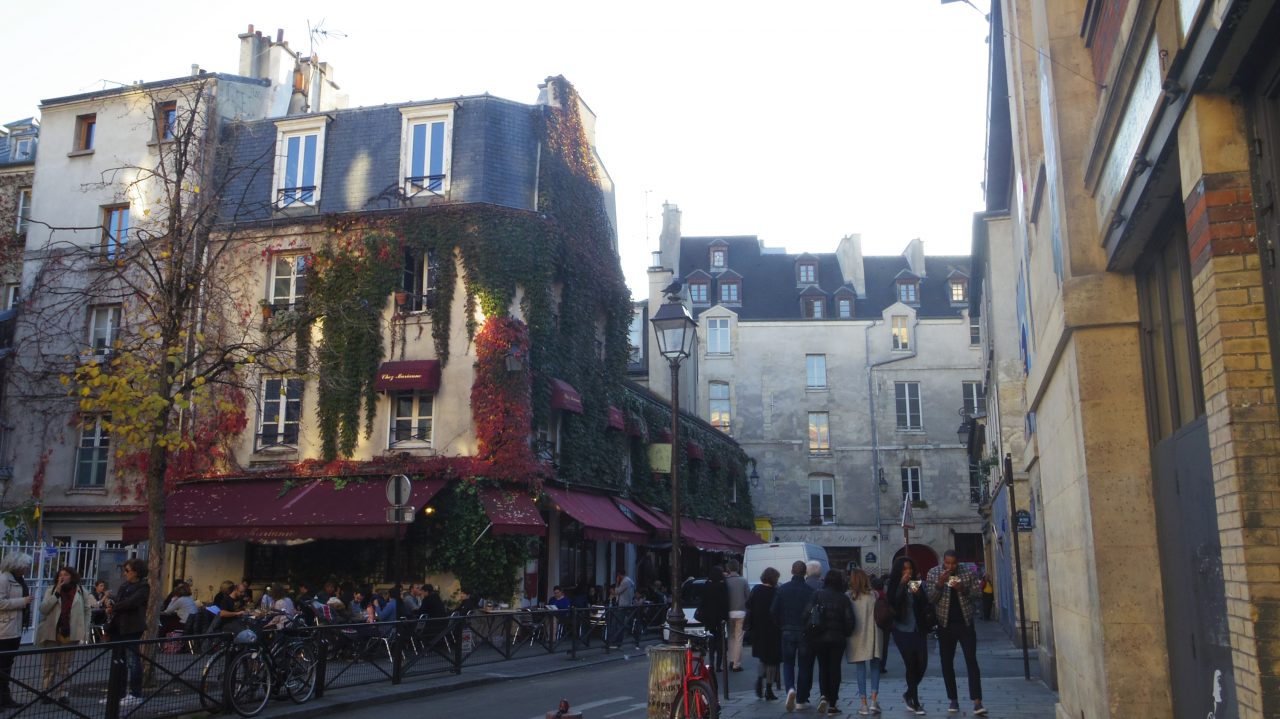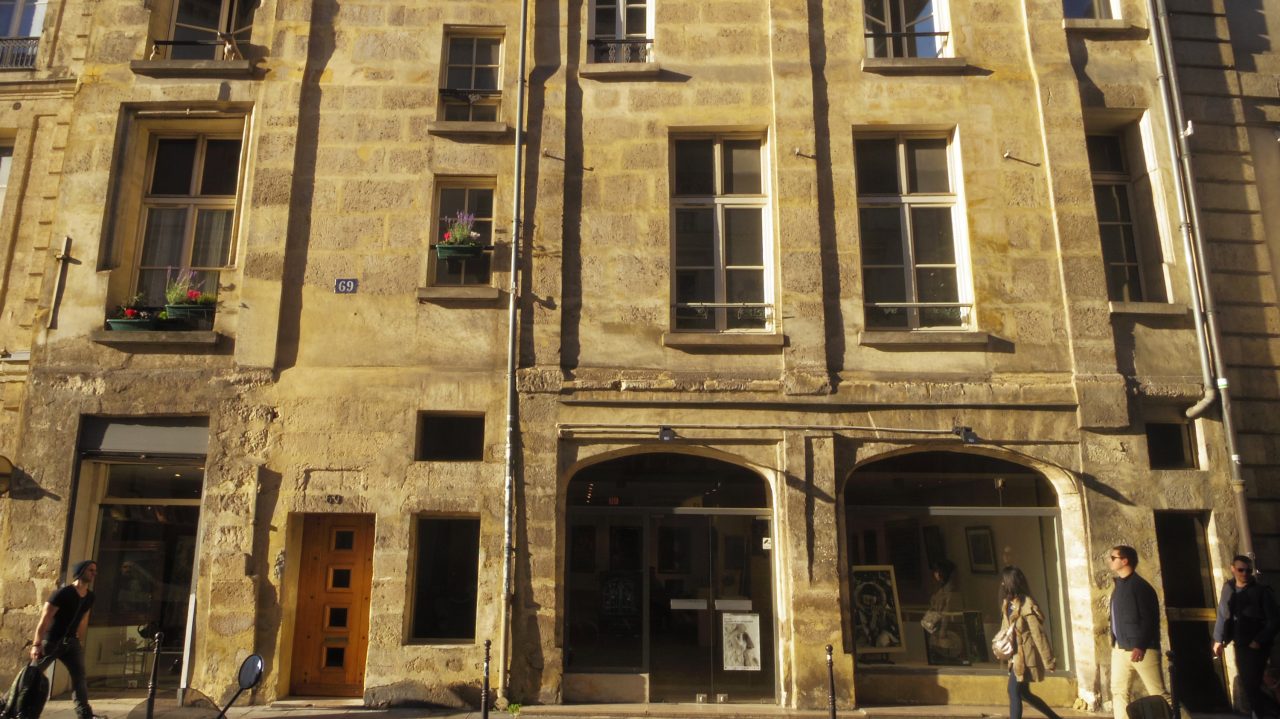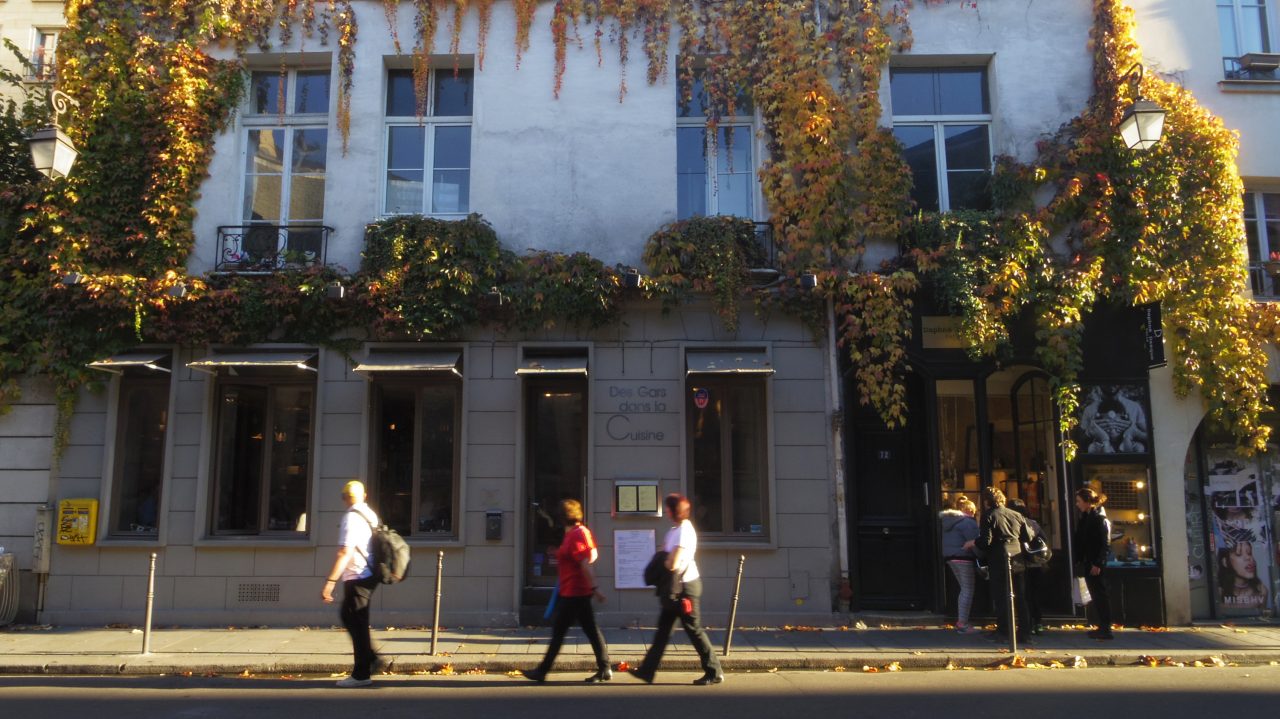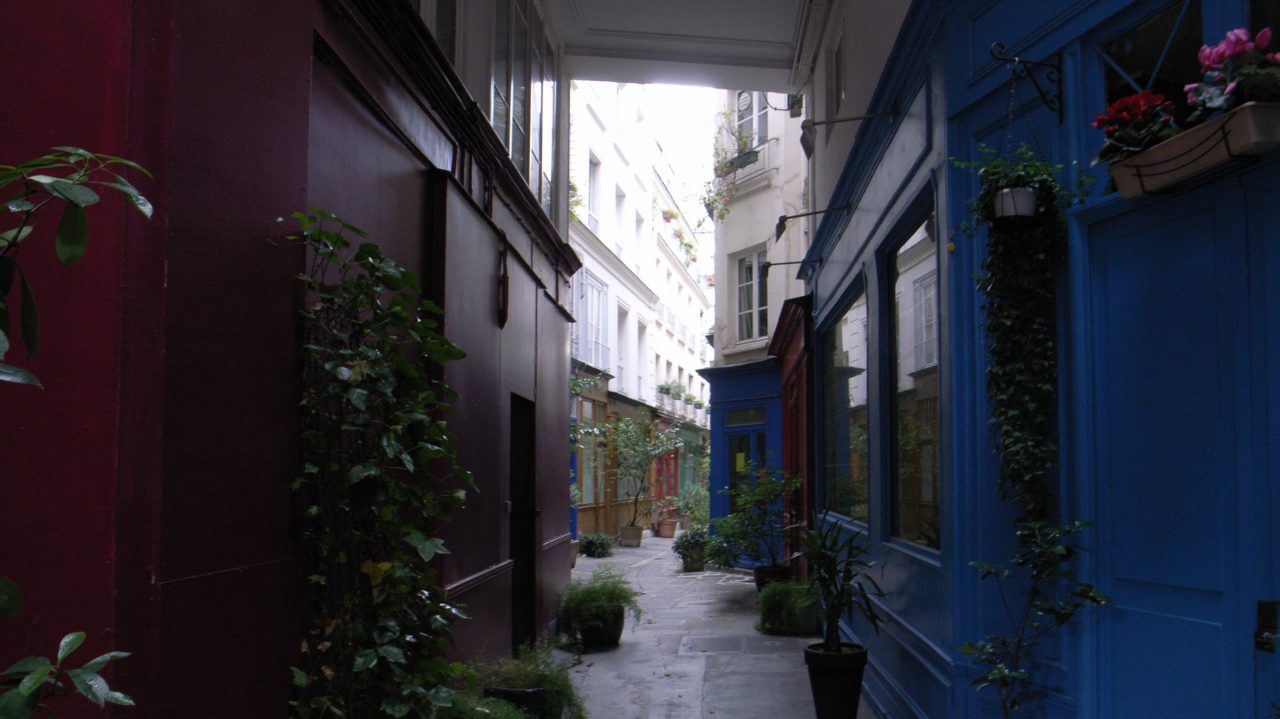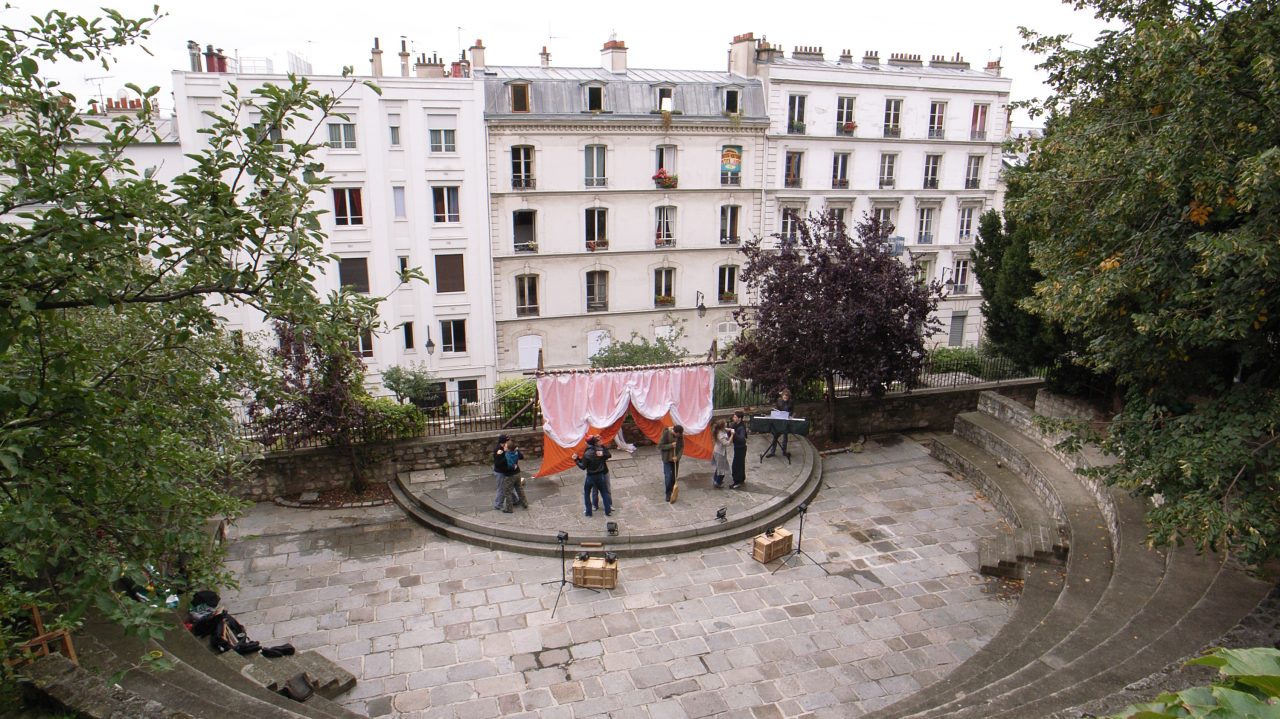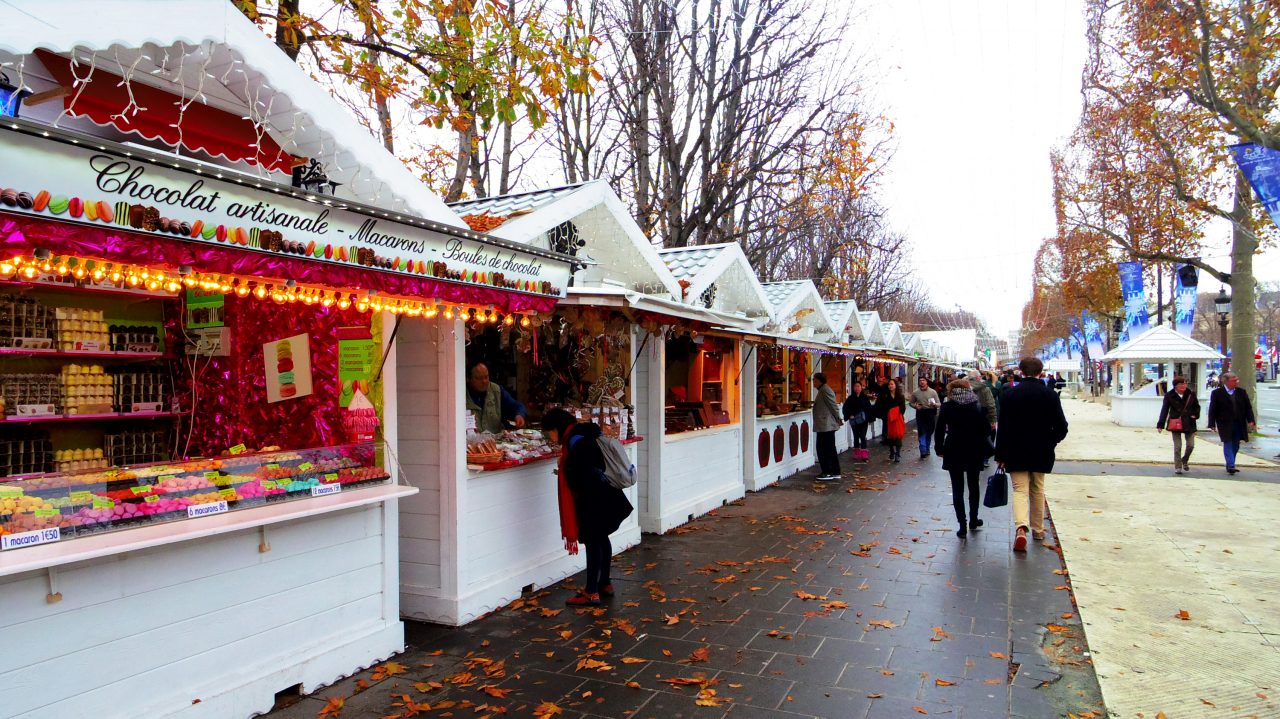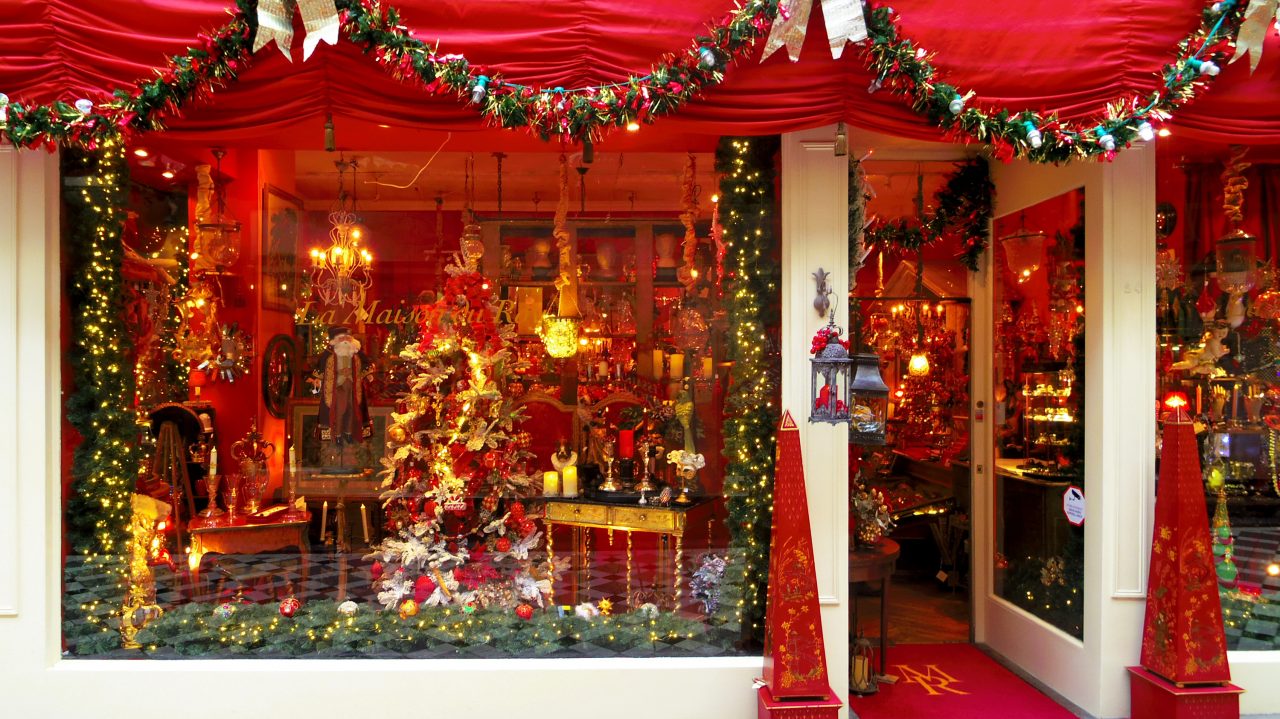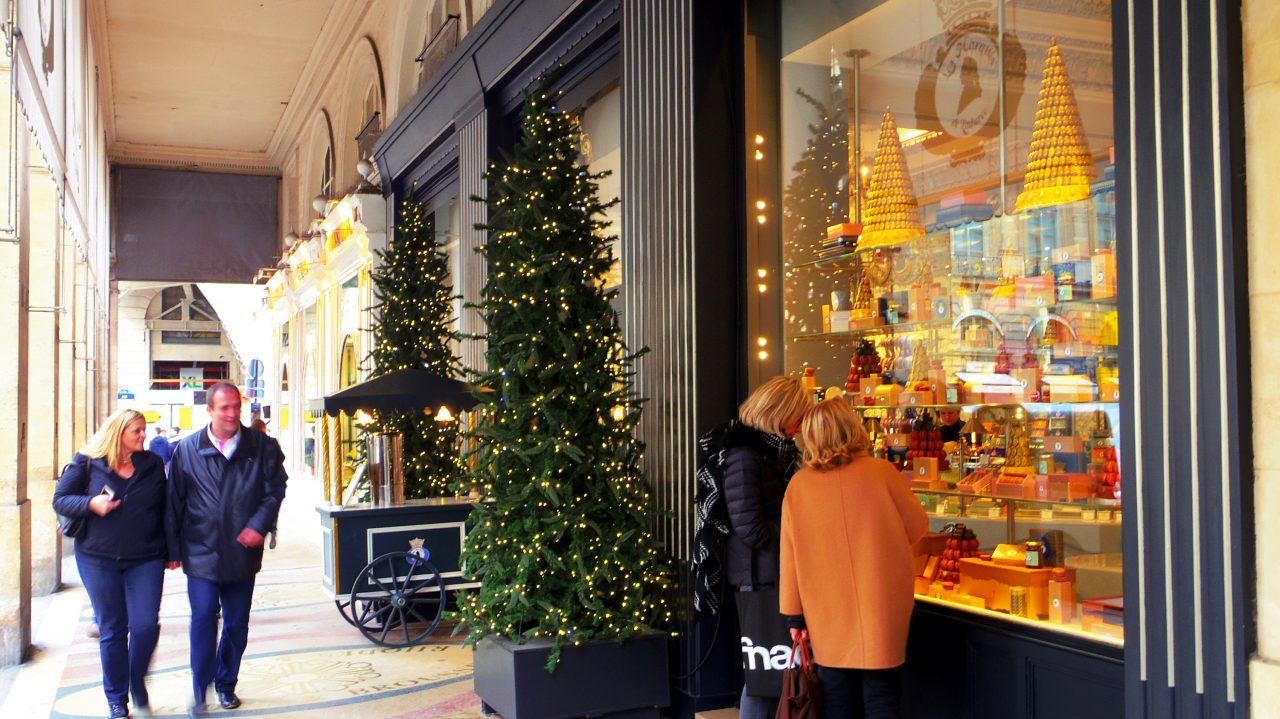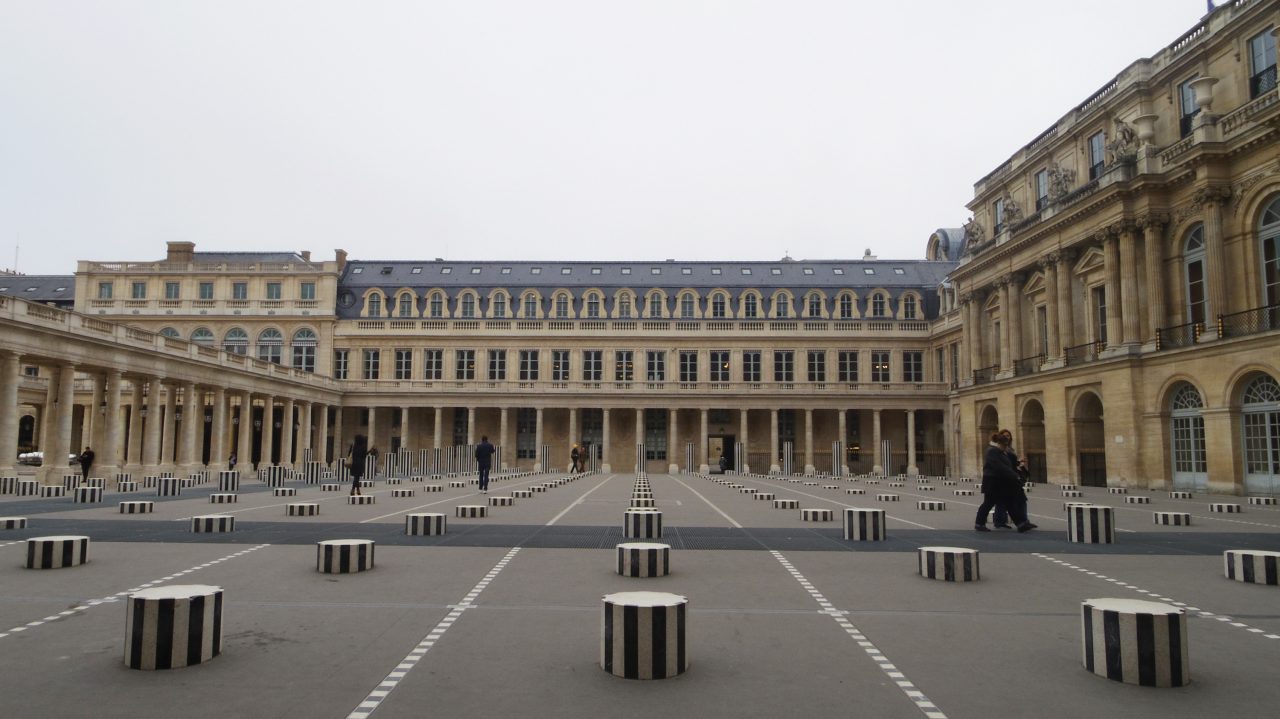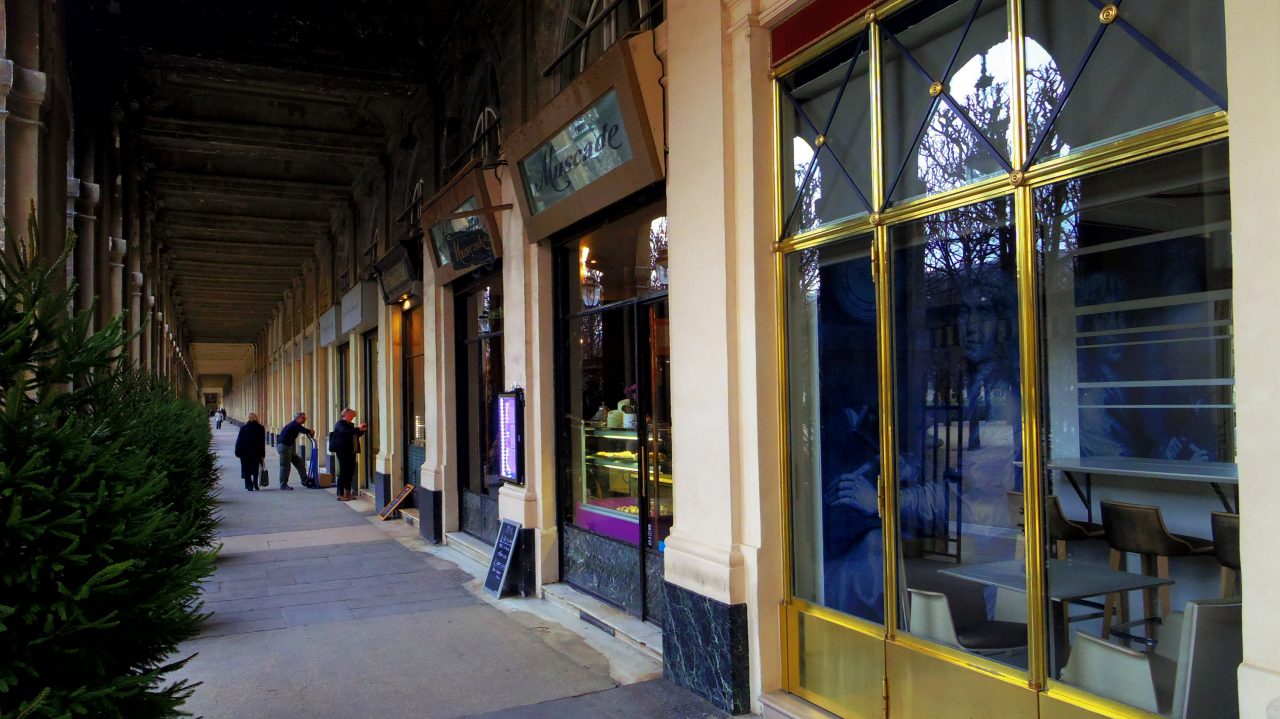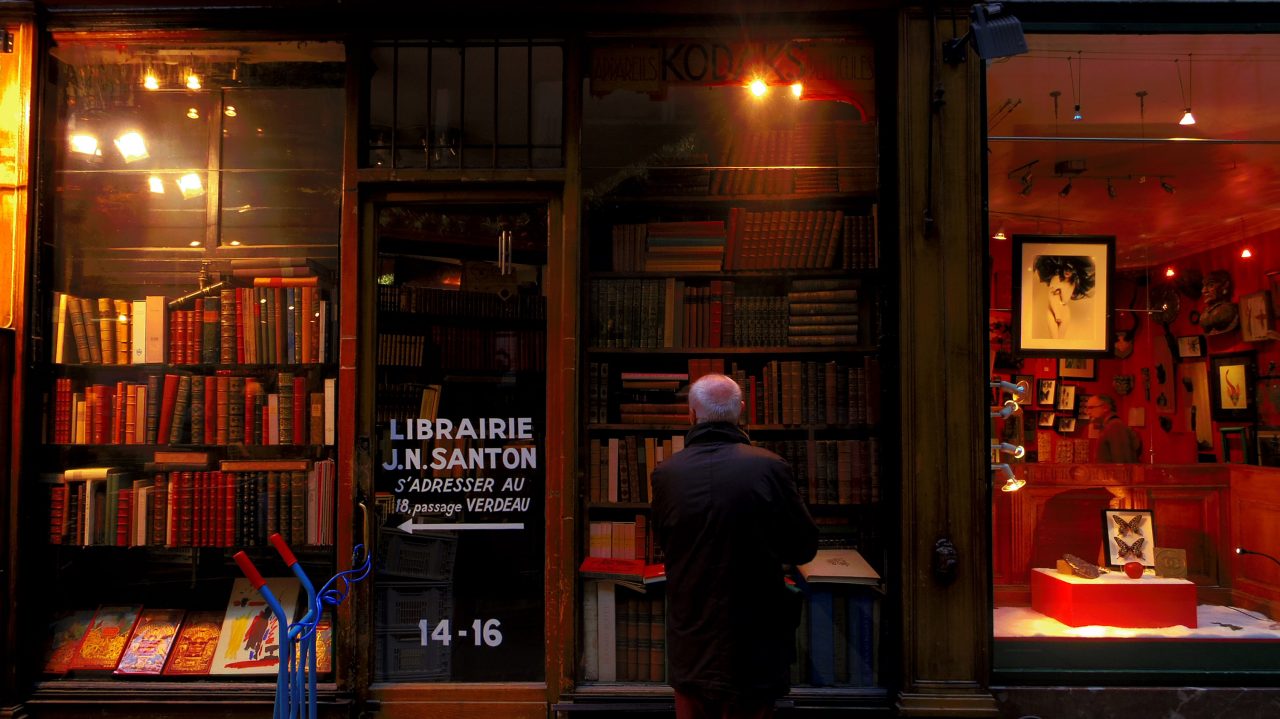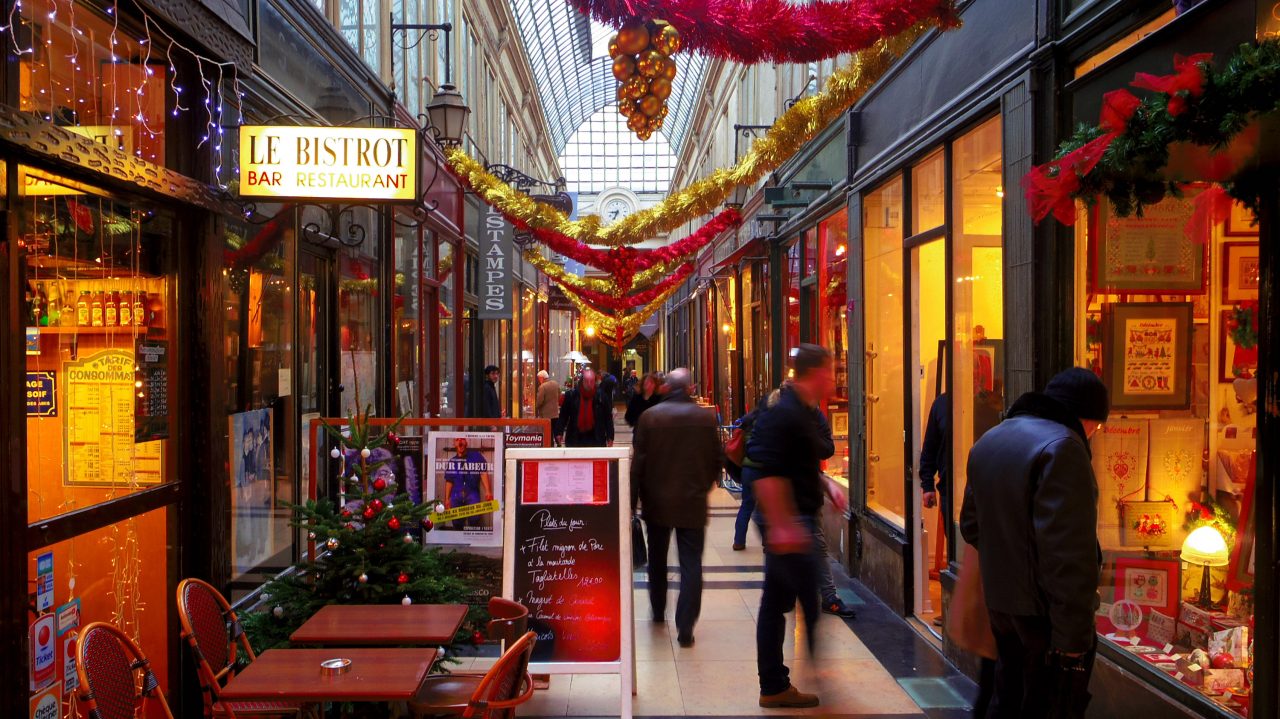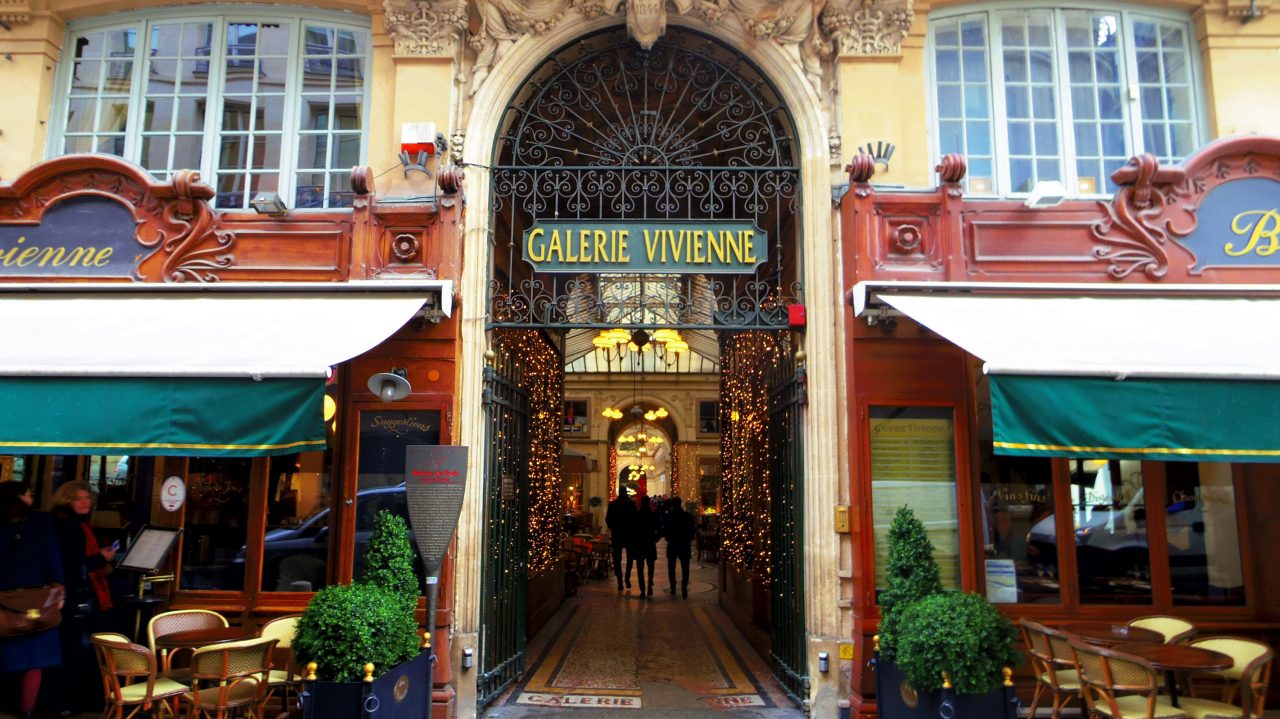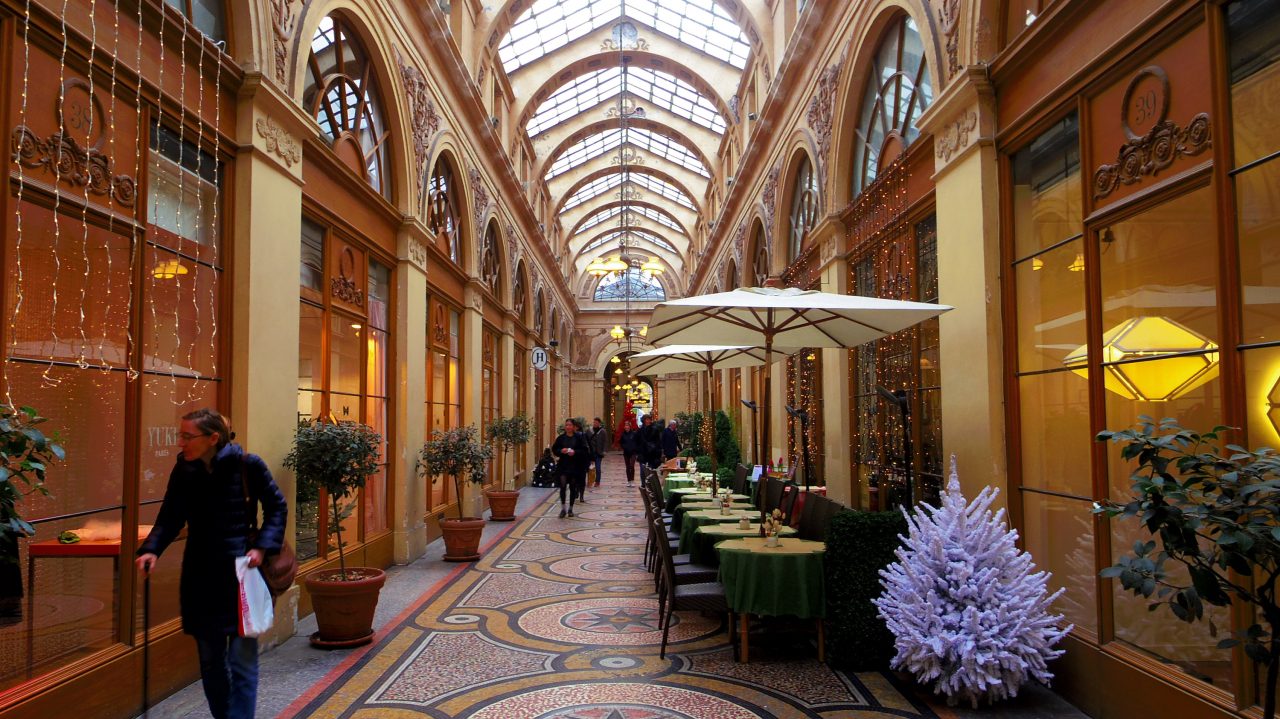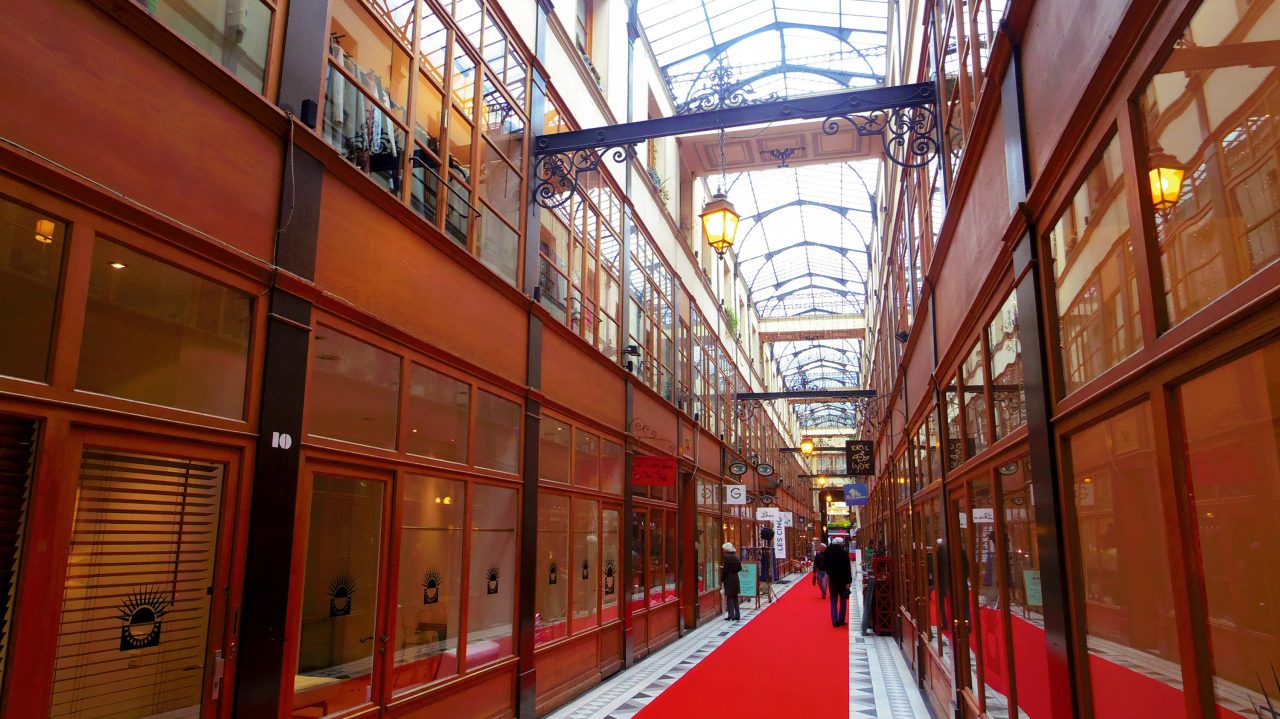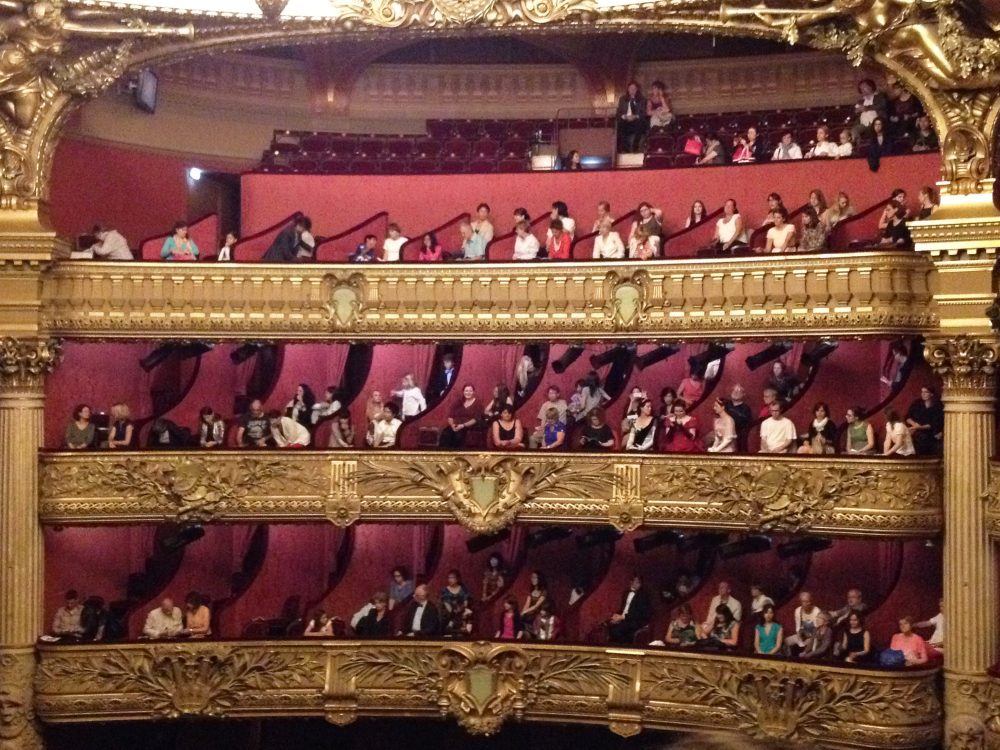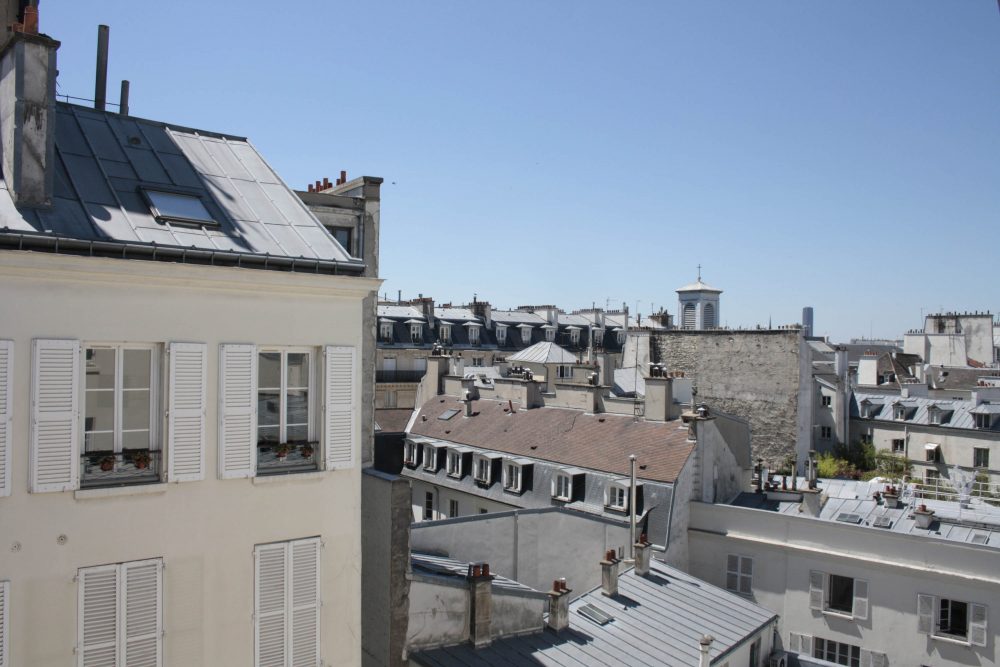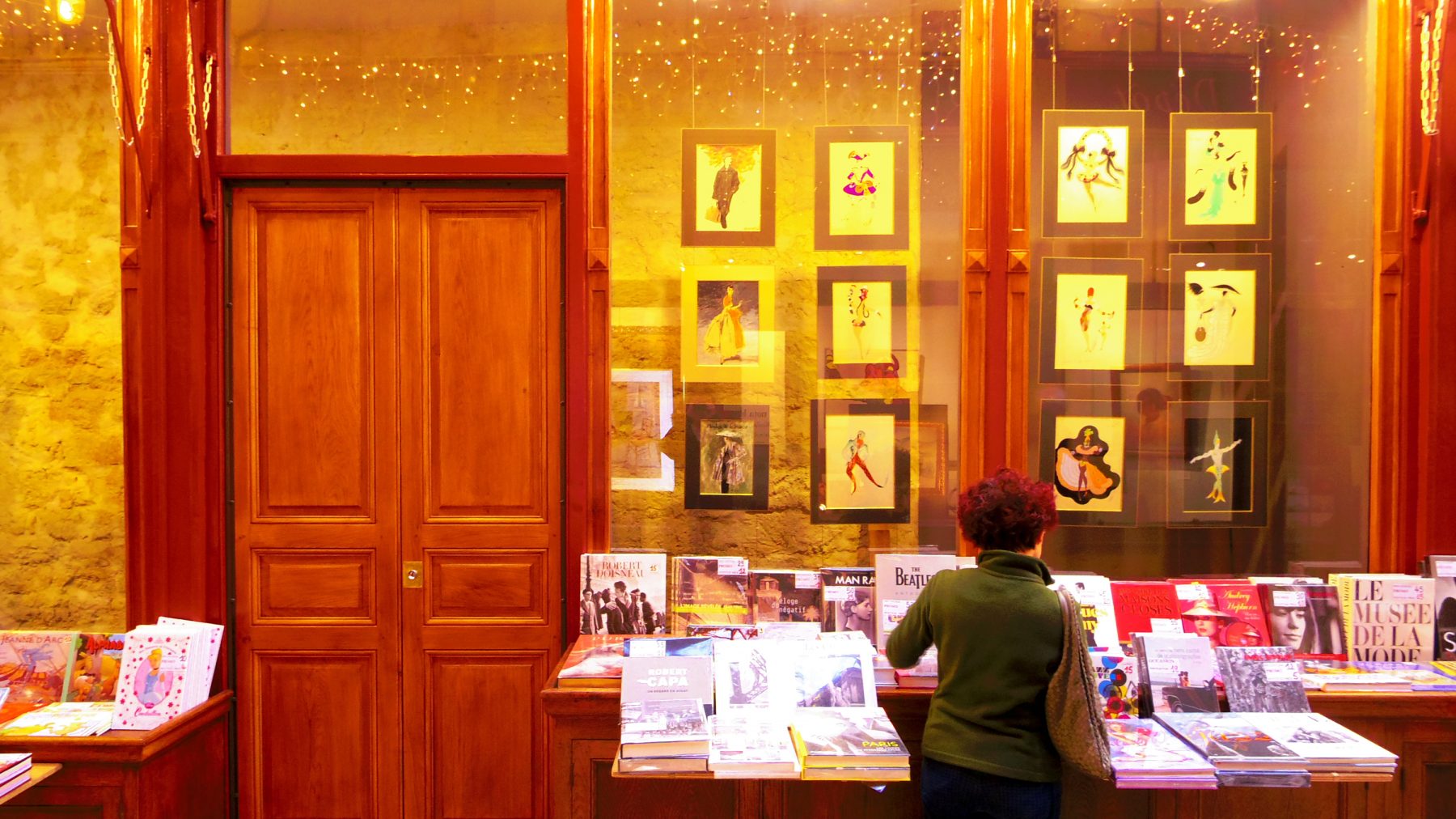
Series Window Column from Paris
The scene of brilliant street
13 Jun 2016
-
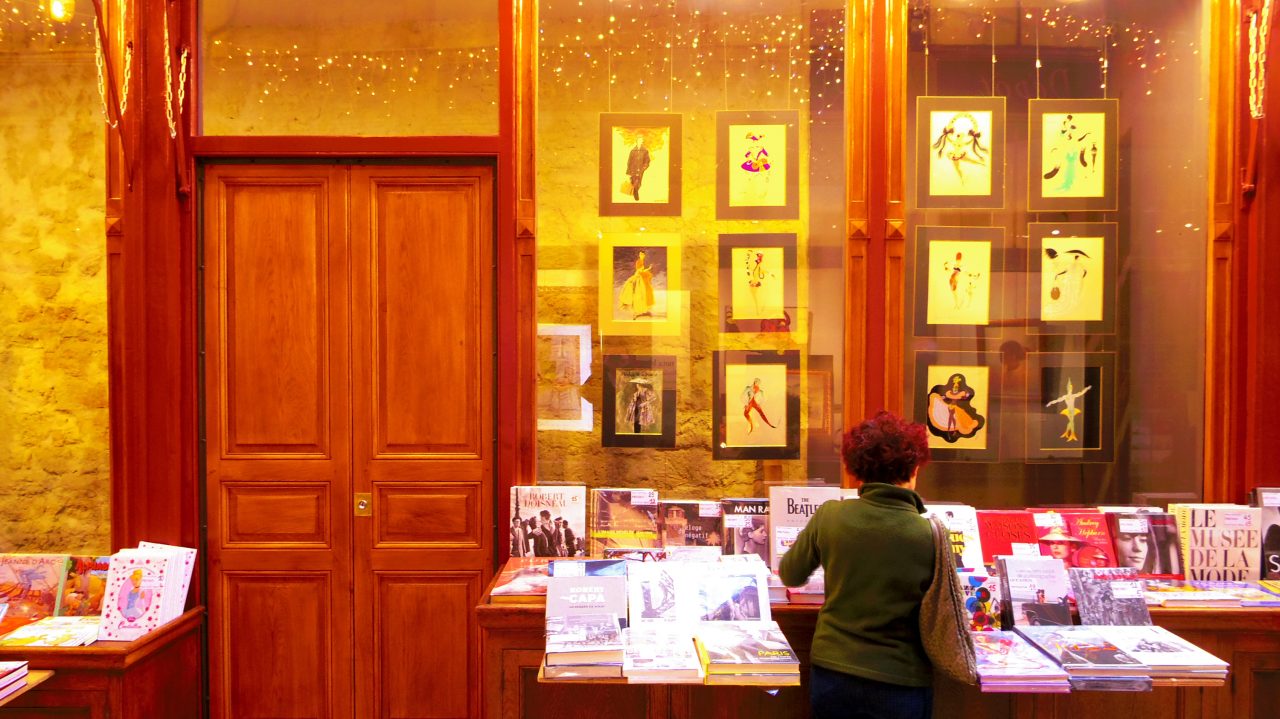
Show window of Passage Jouffroy
It’s pleasant to take a walk on the city of Paris. The roads which were built in a different reason and in a different era are crossing. Walking the street, I can find buildings, cafes and shops from various eras on the roads with different widths. There are various pomp, liveliness and fun by seasons, thanks to the successive window-scape like a display along the street. Entering one step into a quiet alley from a street, I feel that the street noise goes away and the sunlight is weakened. A passage which was used to pass through is beautiful, and it’s also brightly decorated with seasons. If I go a little way out of the central area, I can see a number of various expensive streets. This is a trace of the age when they once belong to an outside village of Paris. After going up a slope, I can overlook a full view of Paris where I was just before.
-
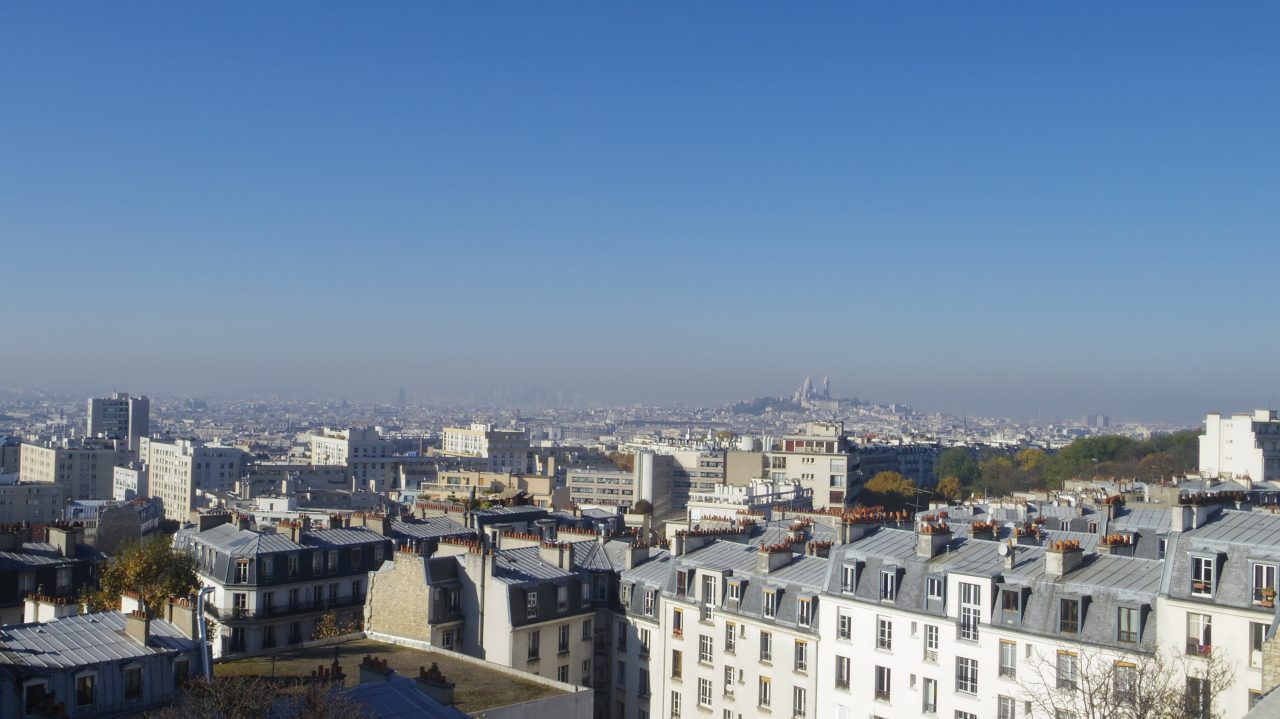
Street of Paris
Winter is coming to Paris. The disturbance that we had experienced in late autumn is gradually faded and the atmosphere of the city becomes bright with expectations for Christmas. Going out, I see children running up to a large window facing on the bustling street and women looking at the window with their eyes shining. In the public square, there is a market raising a big shitomido, so called latticed shutters, for Christmas, where a family or a couple are talking happily while looking through inside. One of the characteristics of this season in Europe including Paris is the gloomy sky over the town with weak sunlight, but the street increases the pump. The show windows build up the splendid atmosphere in the whole city.
-
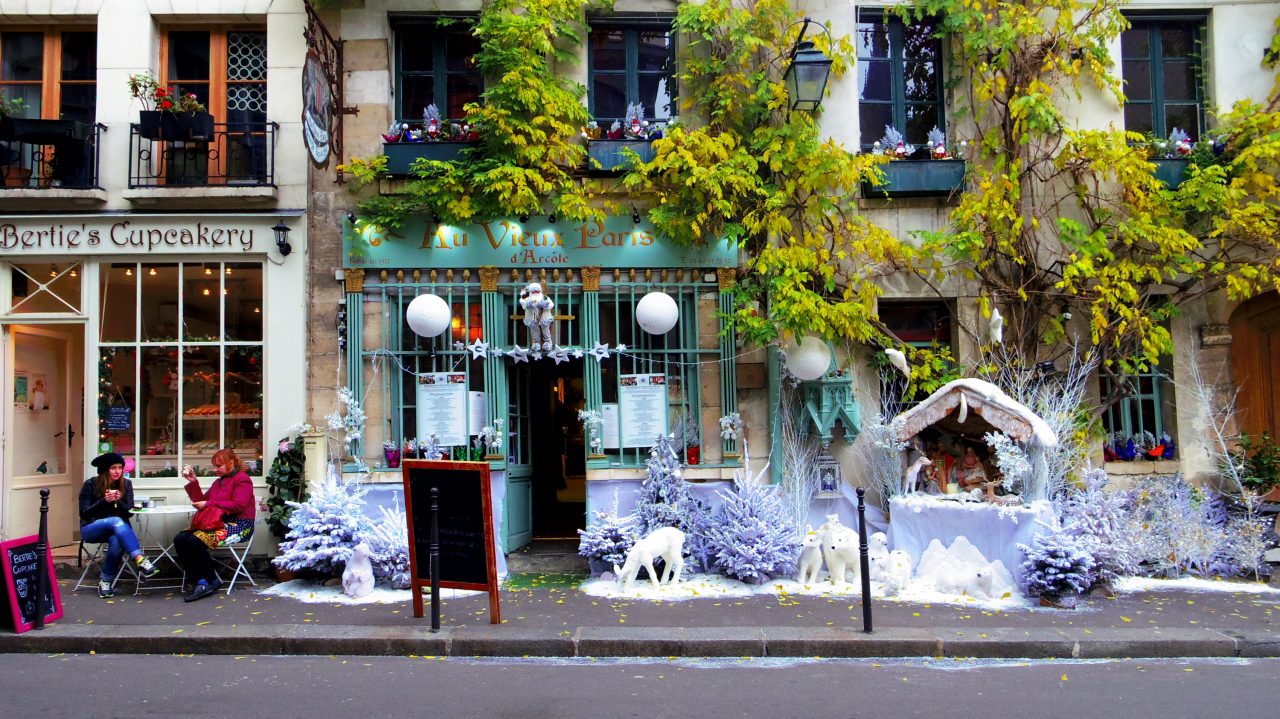
Town of Paris in Christmas season
In the lower floors of apartment in Paris, especially those of old buildings, thick walls and thick pillars occupy a large portion of the facade on the street side. A wide frontage cannot be made due to the walls and pillars.
Therefore, the shops having their show windows on the main street side decorate the pillars as a decorative accent for exterior appearance, or push out the façade a little in front of the pillars. A wide variety of expressions can be found: some try to give a depth, or a role of frame. In some cases, the façade is decorated as if there was no such pillar.
-
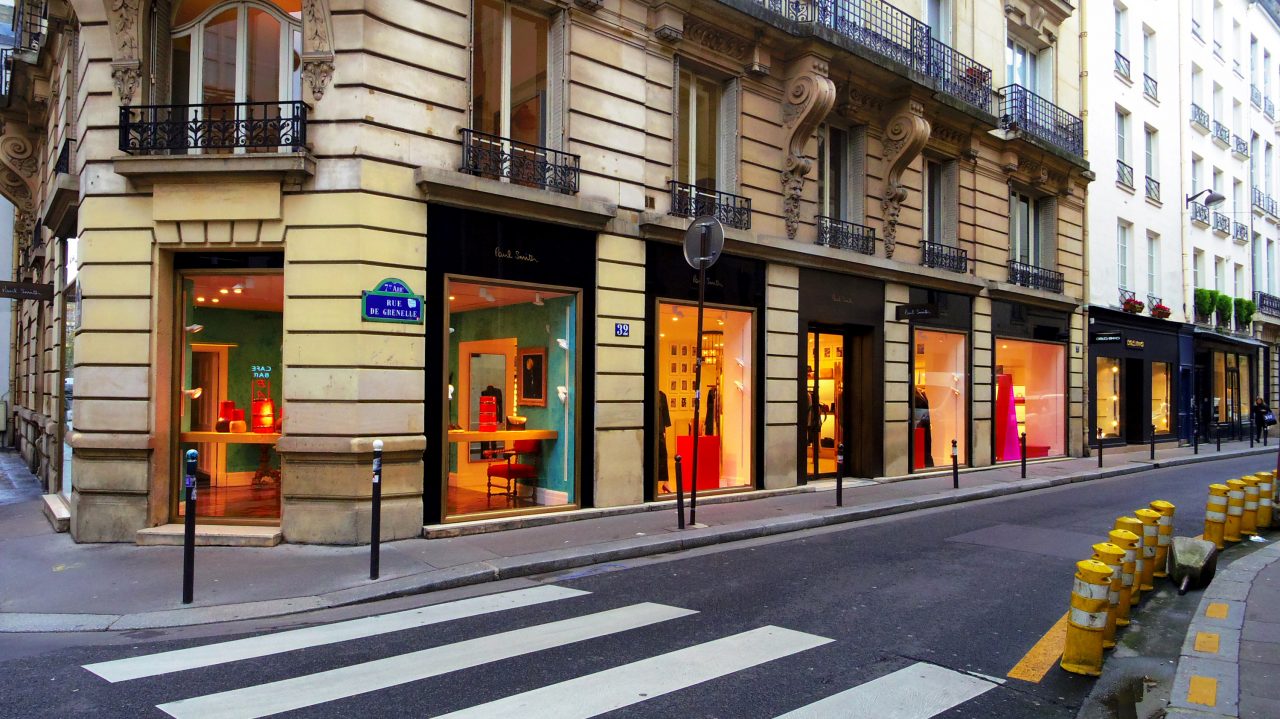
Facade fitting the glass between the pillars
-
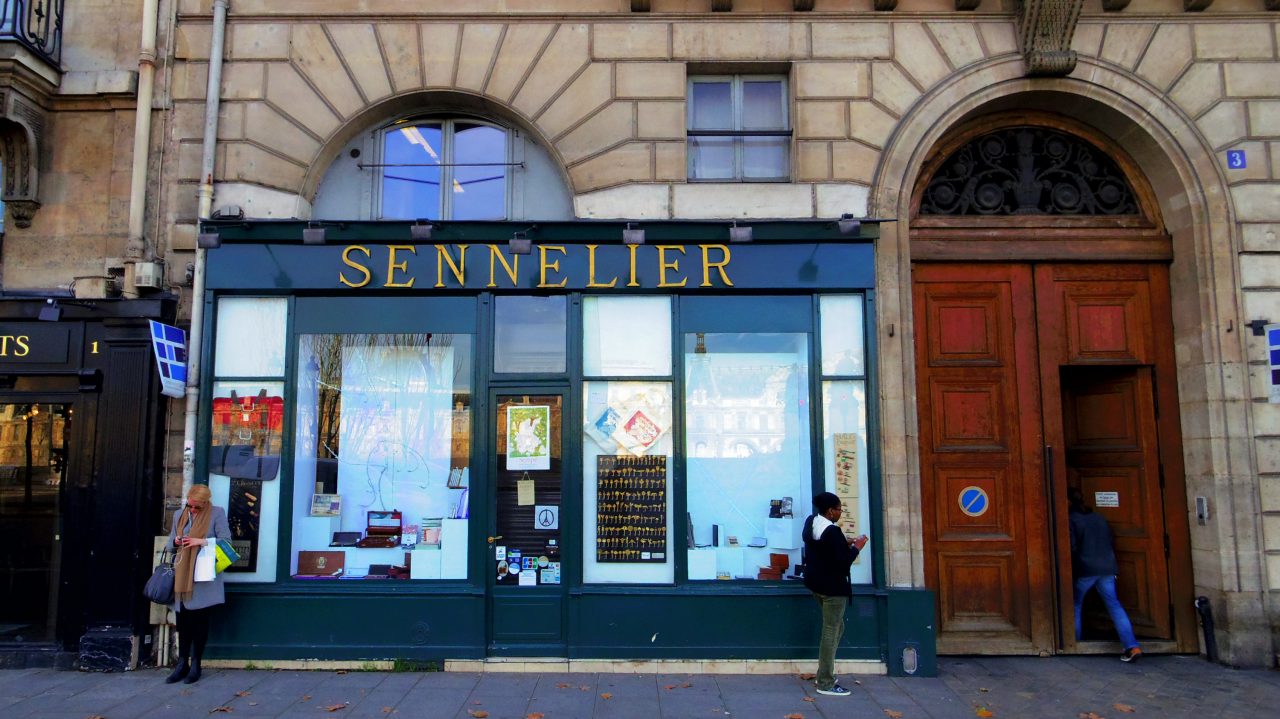
Facade cover the building frame
-

Facade cover the building frame
-
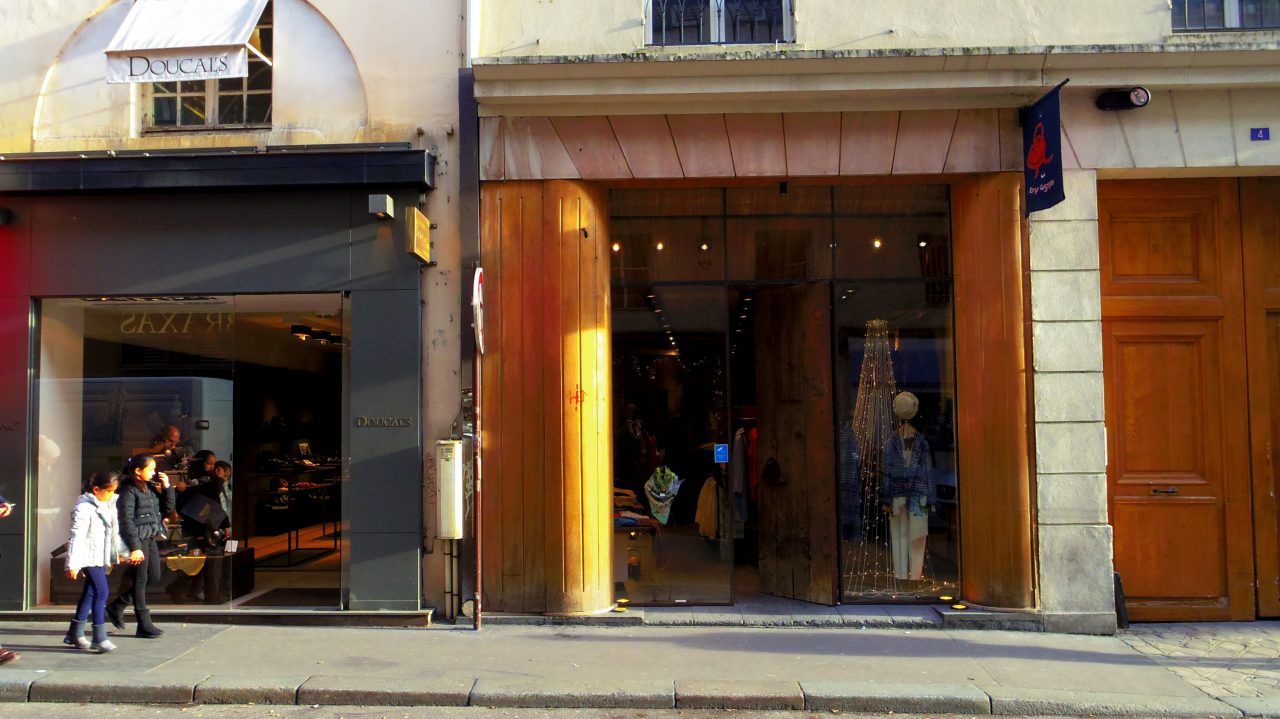
The pillar part become a accent of facade
The devises for the show windows can be found at the restaurants in Marais and Quartier latin where many students and tourists gather. Walking on a busy alley, I can see small windows in the windows of fast food shops such as crepe and kebap. Employees working inside the shop will start preparing food right in front of me when I order from the window. Sweet smell comes through the window. Then I pay and receive the goods. The way of opening the window varies: pulling to the left and right, up and down or folding inward three window’s door. The sound of cooking and sweet smell of baking flow into the alley and become also one of the elements of the show. Moreover, in Paris, where the many building are standing in a row, openings are limited to the road side or the courtyard side. A big air inlet and the like for the restaurant are resourcefully opened under the window.
-
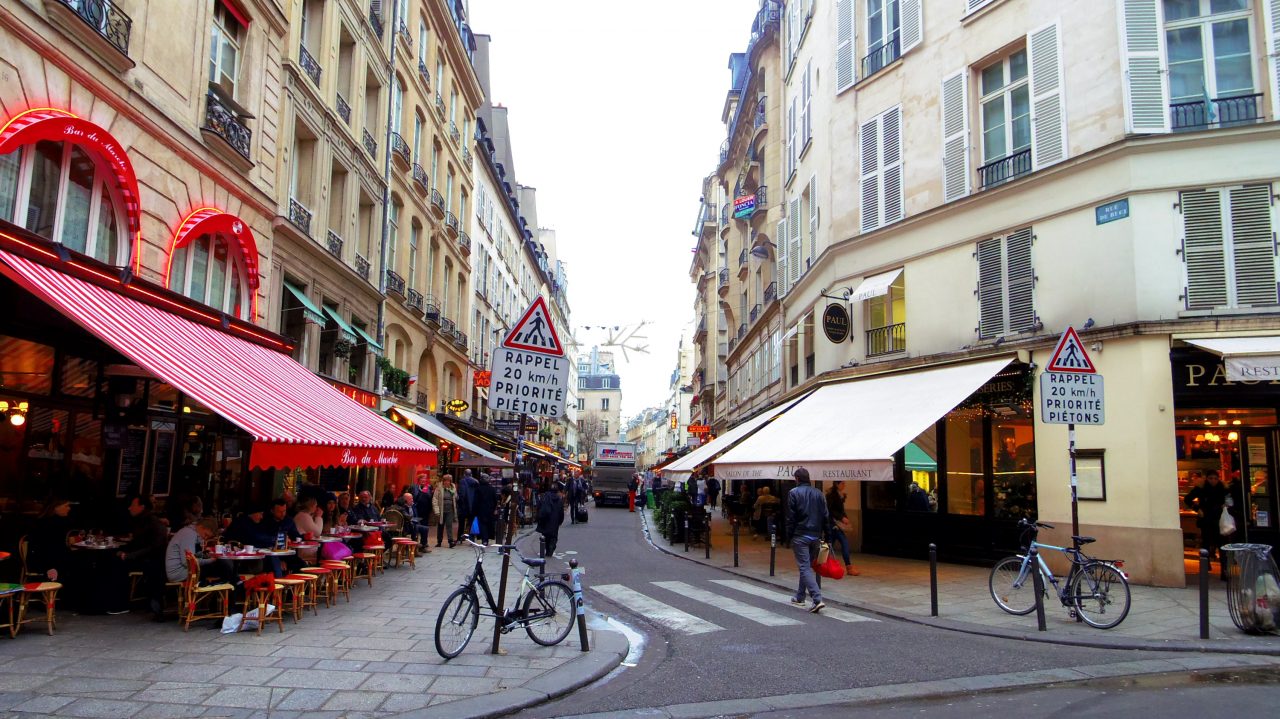
Quartier latin
-
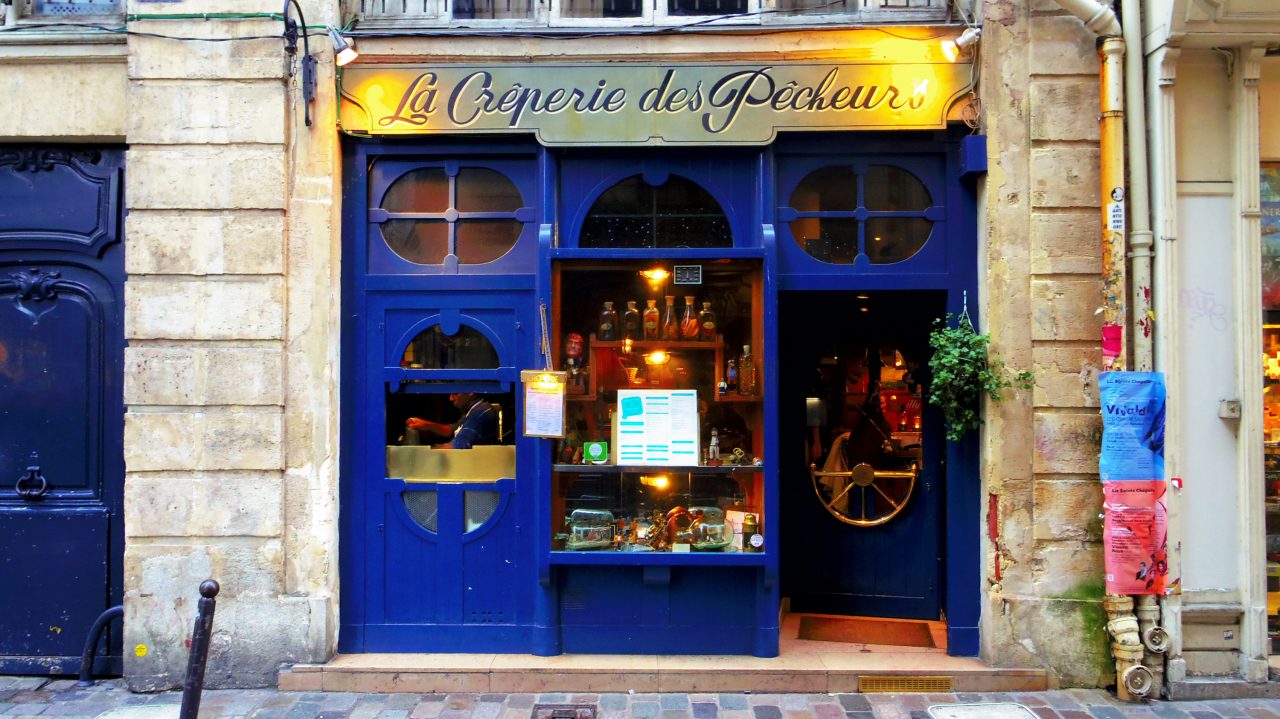
Show window of creperie
-
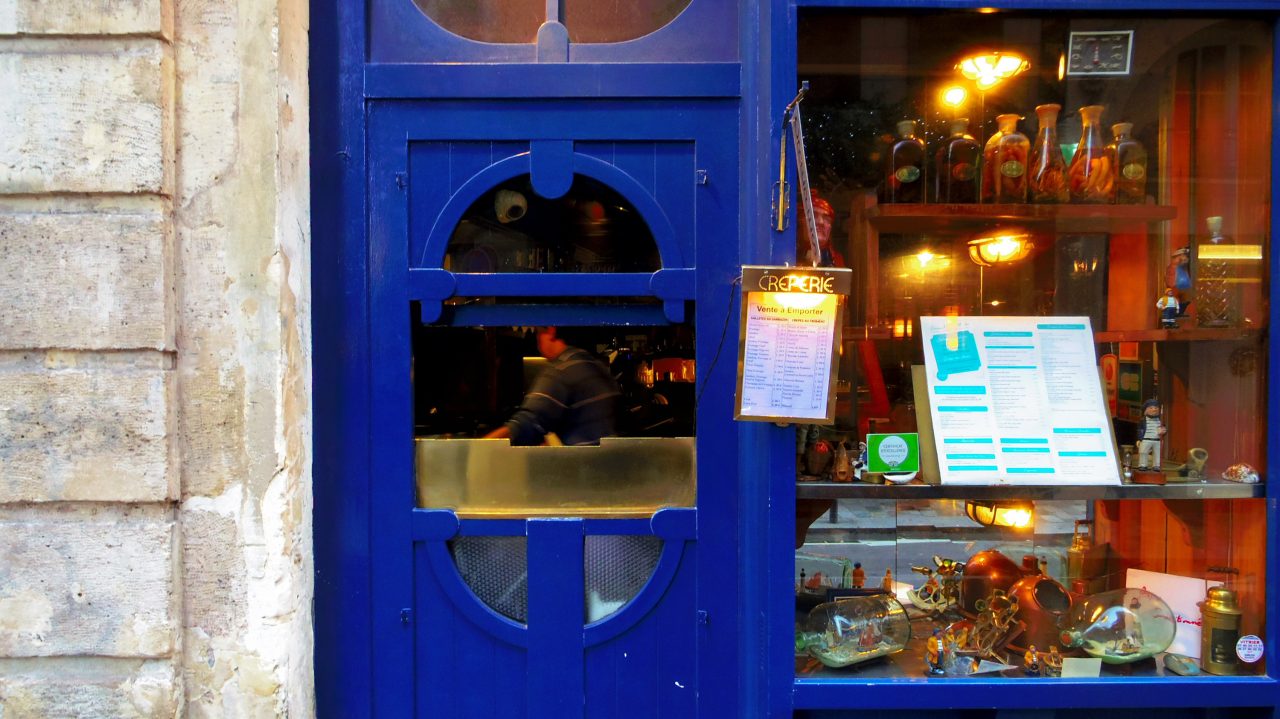
Small window opened up and down. Order and receive the goods here
-
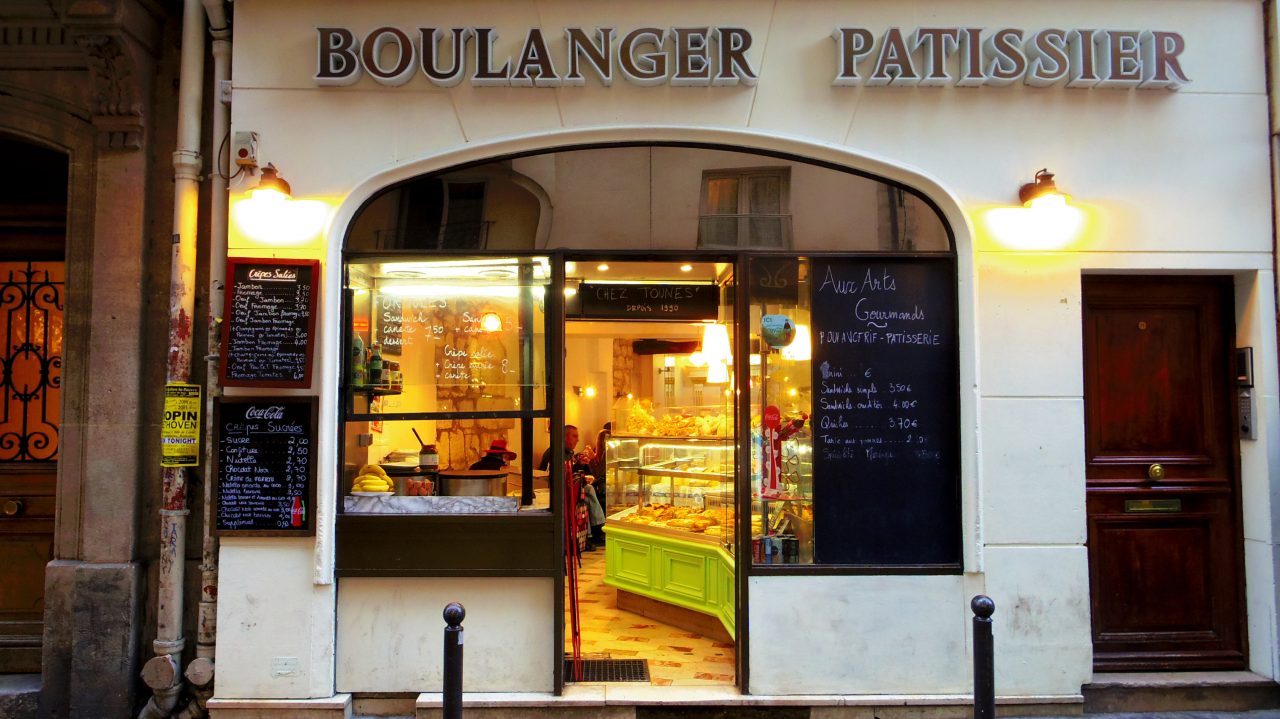
Small window opened up and down of a baker
-
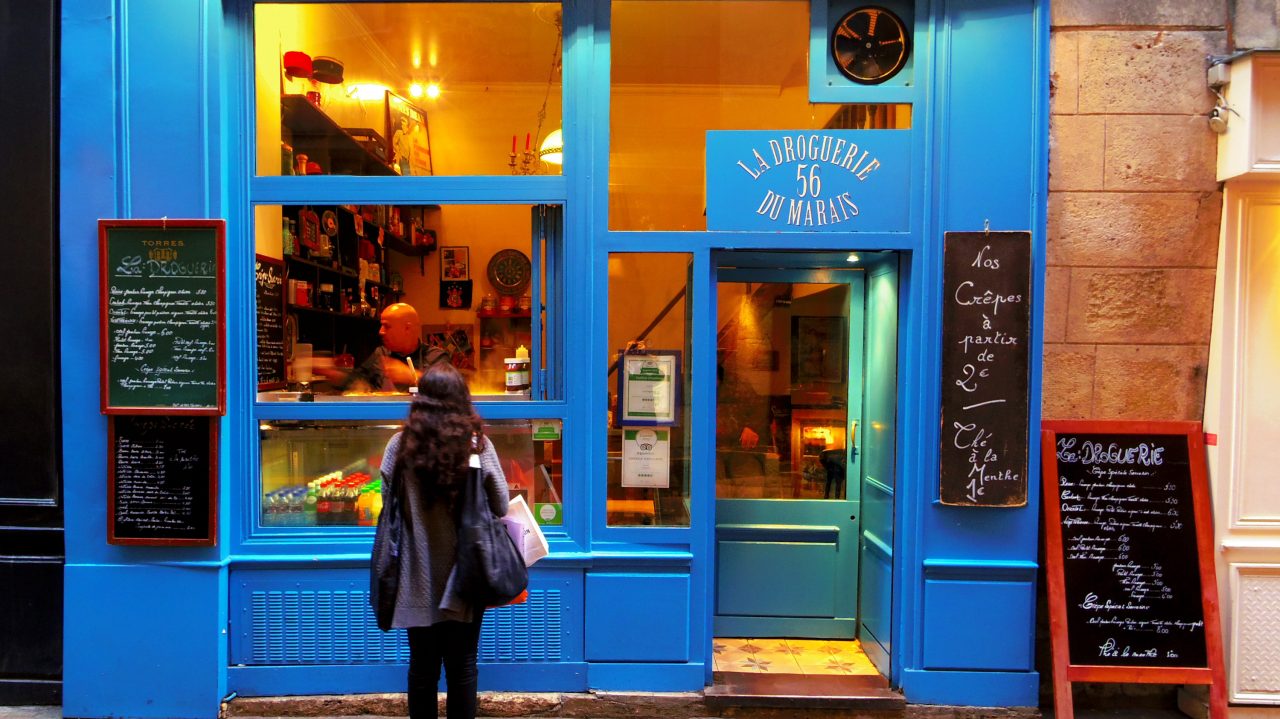
The lower part of the window connects with the underground for a change of air.
Upper part of the entrance has ventilation ducts directly opened on the window.
-
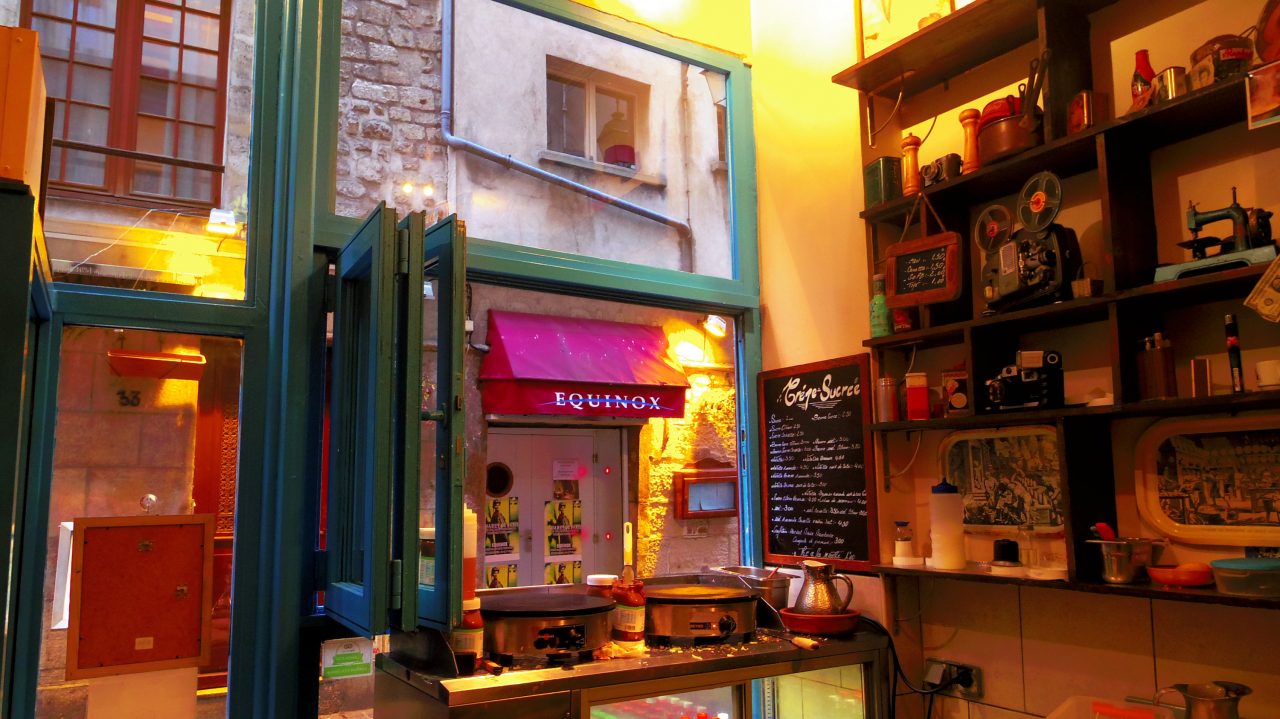
Window opened by folding on the inside with three pieces door.
The lower part of the window connects with the underground for a change of air. Upper part of the entrance has ventilation ducts directly opened on the window. Window opened by folding on the inside with three pieces door.
-

There is a ventilation box under the show window.
Show windows are linked with the history of Paris. A harbinger of the show windows is the first floor of Palais Royal, a castle in center of Paris for Orleans prince in the fifth generation, which was freed and lent as a shopping street to the general public in 1784. There was a cloister and people were able to window shop even on rainy days. Even people who did not feel the need to buy a commodity could drop into freely there, and it is said that it was the liveliest place at that time in Paris. Visiting the place, I see the show windows of stores in which I can feel the dignity and history as a castle even now.
-
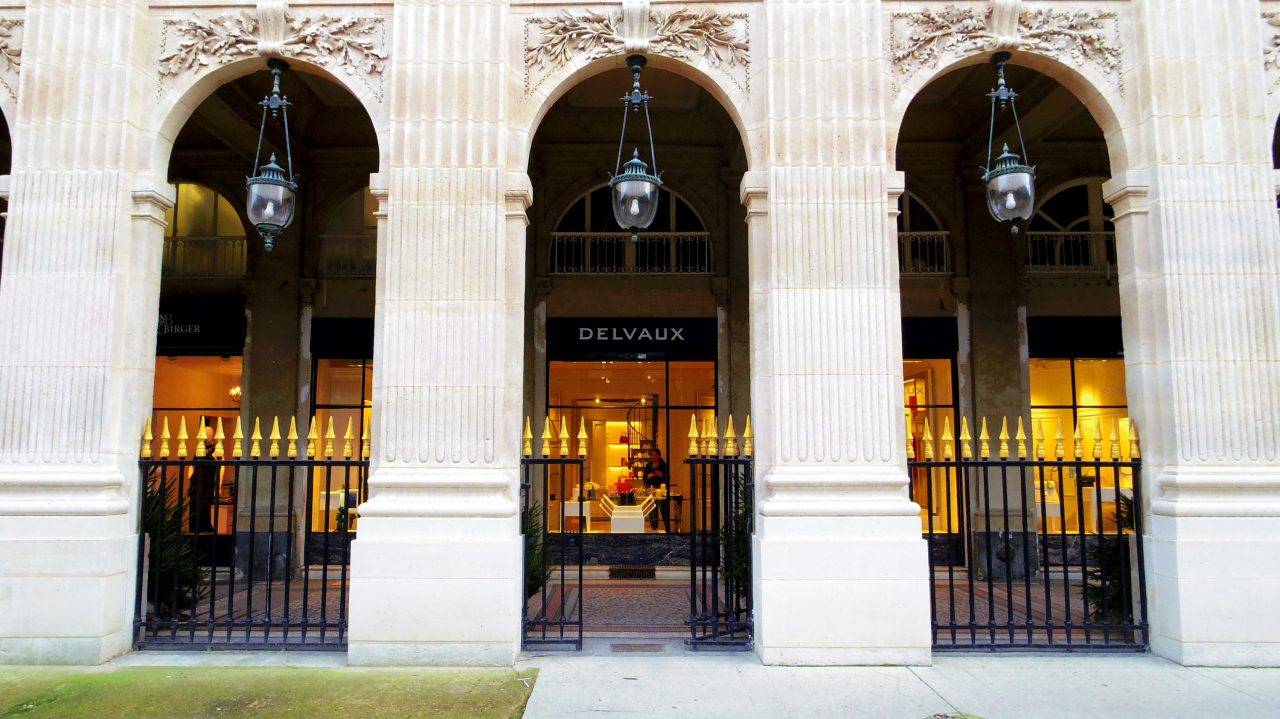
Palais Royal and that of cloister
Then, Magasin de nouveautés, the oldest department store in the world, which was founded in 1838, known as Bon marché today, invented ‘show commodity’ through the show window in the store. Until the early 19th century, almost all show windows of stores were dirty, had hardly enough displayed commodities, and did not play a role such as the today. The inside of the shop was dark and all commodities were put away in the back of shop. The customers could not actually see the goods unless they tell their desire. All prices were determined through negotiation with the clerk because price tags did not exist in these days yet. Furthermore, there was a rule that customers should not leave the shop until they buy some commodities. So the shopping for people living in Paris in the 19th century was to purchase necessities and they might have considered it as a troublesome daily task. Moreover, people other than the upper class who could use a horse-drawn carriage in daily life had a limited range for going shopping by walk, because the street in Paris at that time had not been put in good condition.
In such a background, displaying the commodities by Bon marché newly expanded the shopping experience, which used to be the event of daily life.
-
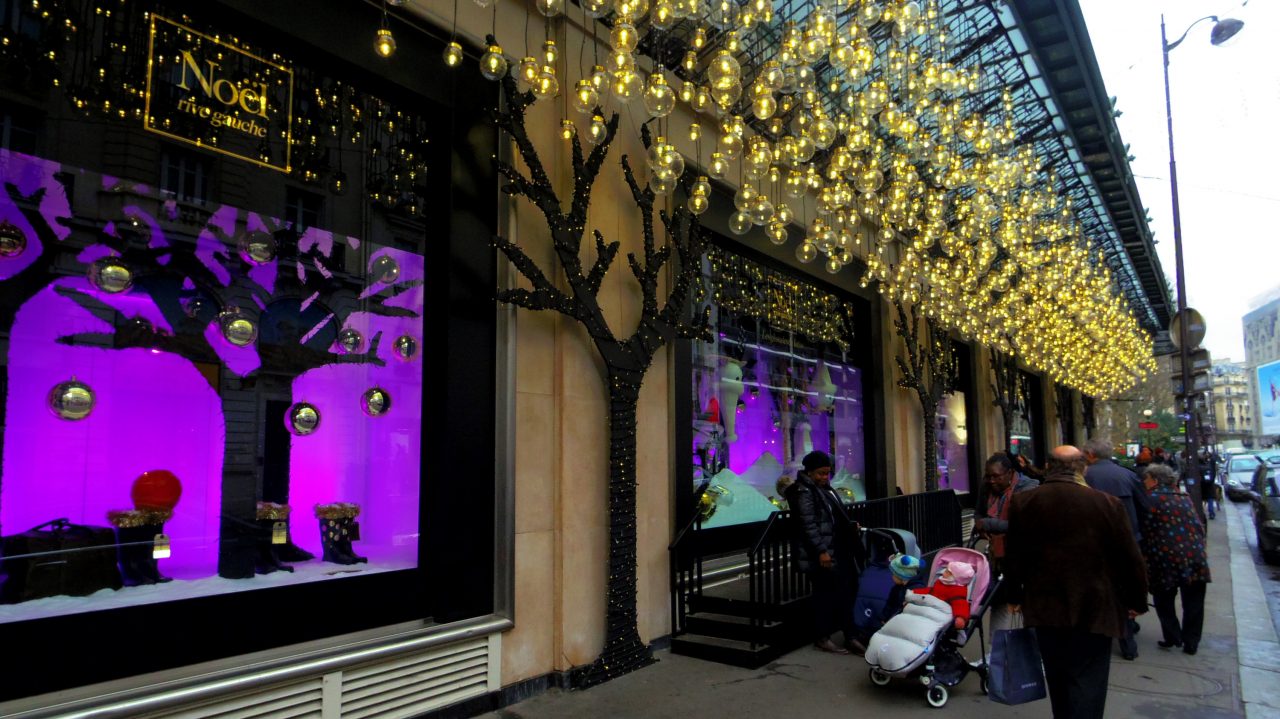
Show window of Bon marché
-
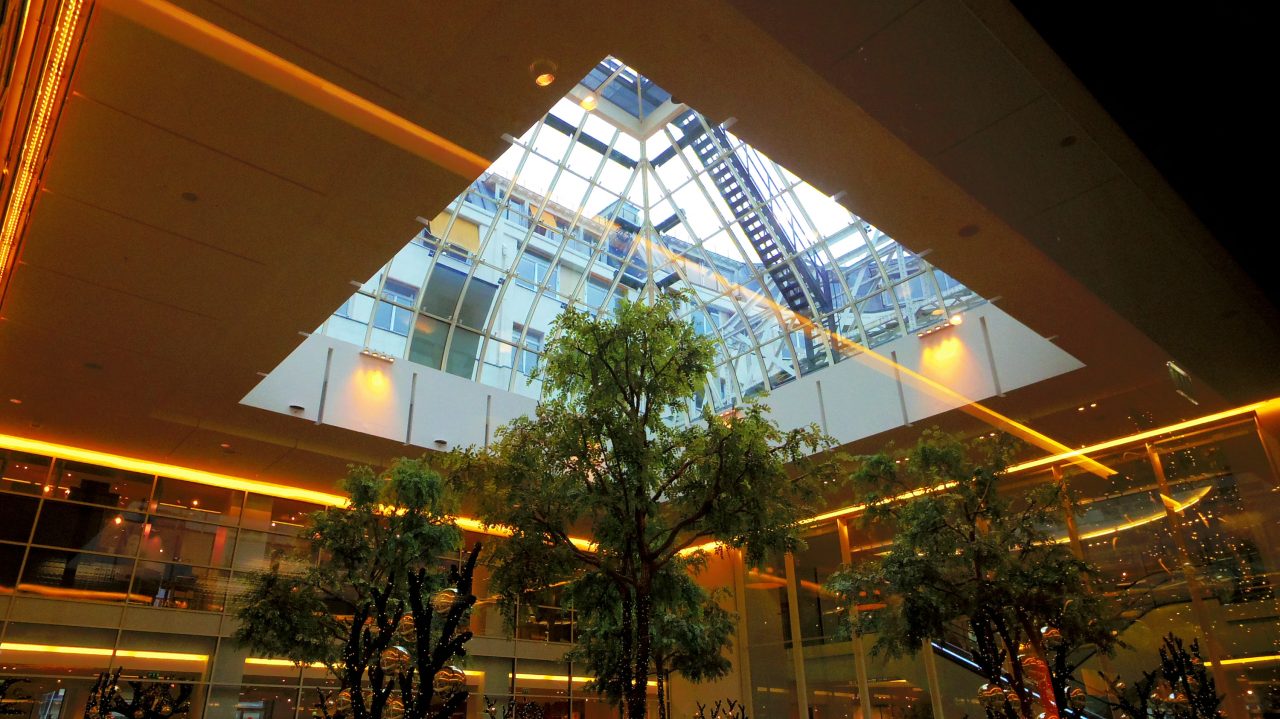
Glass ceiling of Bon marché
-

wellhole of Bon marché
The current Bon marché, built with the iron and glass in 1887, has the ceiling covered with huge glass and sunlight pours up to the first floor through the wellhole. Going to see the various commodities lit by the light might have been an experience as if going to a theme park for the people in those days.
With the emergence of the Bon Marche, cutthroat competition among shops was initiated. The shops having a conspicuous name to attract people increased. And then, there was a necessity to make the appearance of shop stand out more than the shop name. Shops began to put up the words such as “full price sale” or “sell” on the whole facade of the shop, and likened the entire shop to the show window by putting glass walls as much as possible in order to show the inside of the shop. In addition, a display to stimulate a curiosity of customer was also devised: the show windows are jutted out over the sidewalk to display the commodities as much as possible. Such device for the show windows has been taken over by the shop today in a variety of ways.
Passages also appeared between the end of the 18th century and the early 19th century. Passages were for pedestrians and were covered with an iron structure and glass roof. Passages were born from the historical background of Paris, which was not for the maintenance of the roads, are alley-like spaces connecting streets. Passages became popular among the general public due to a number of shops along the streets, just like Bon marché and Palais Royal, as well as due to the bad weather condition during winter in Paris. There were walls of iron and marble, floor tiles with beautiful pattern, and also various commodities displayed in the bright show windows decorated by the devises. There’s no doubt that passing through this space was not an ordinary experience: getting light through the glass roof.
-
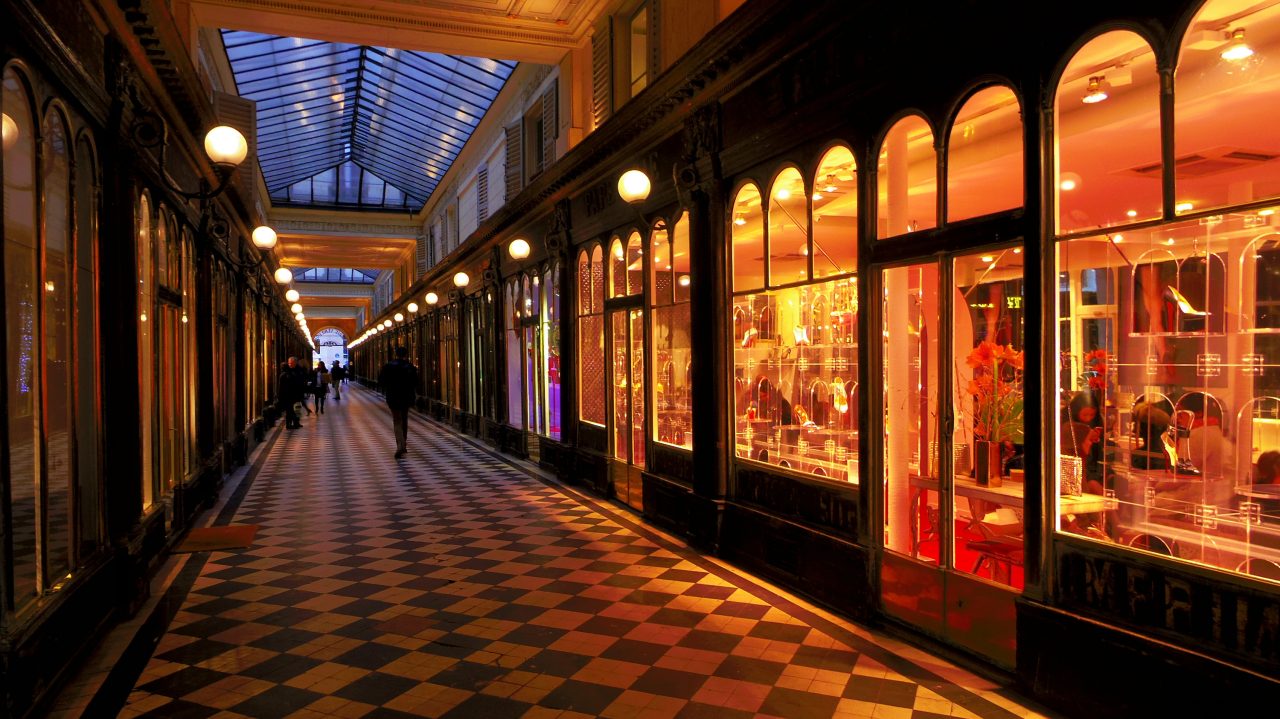
Galerie Véro-Dodat
-
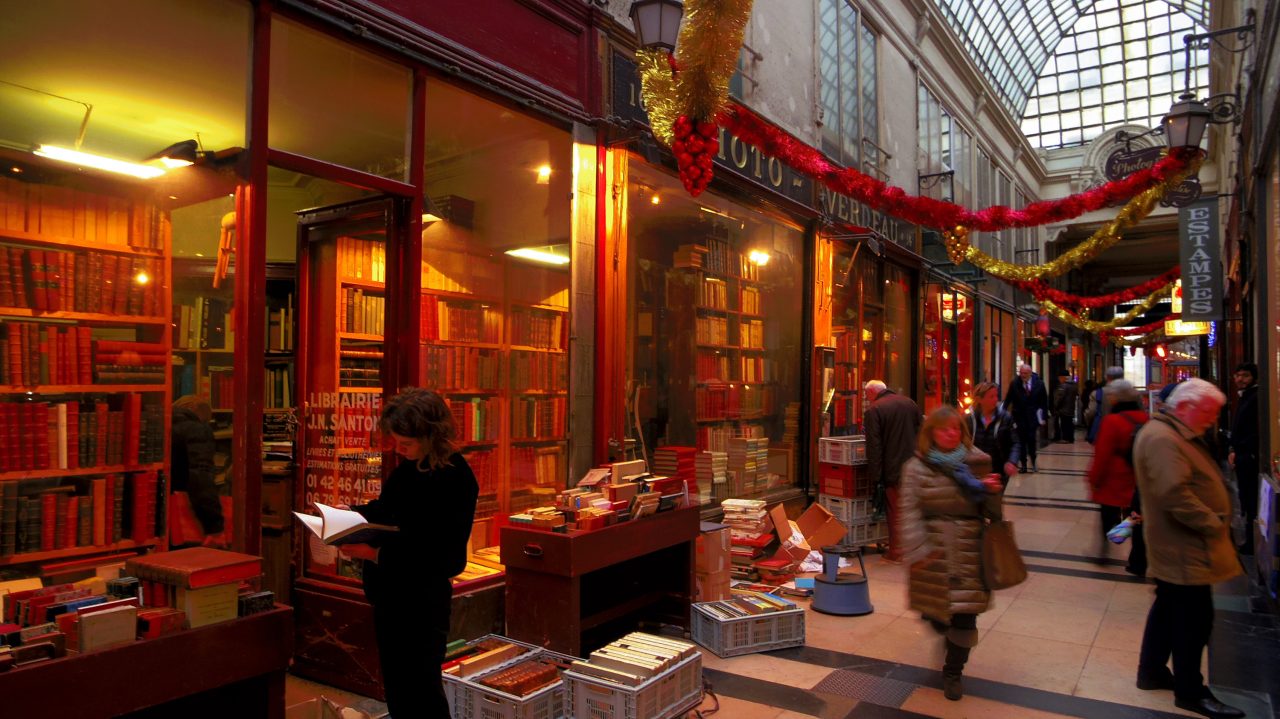
Passage Verdeau
-
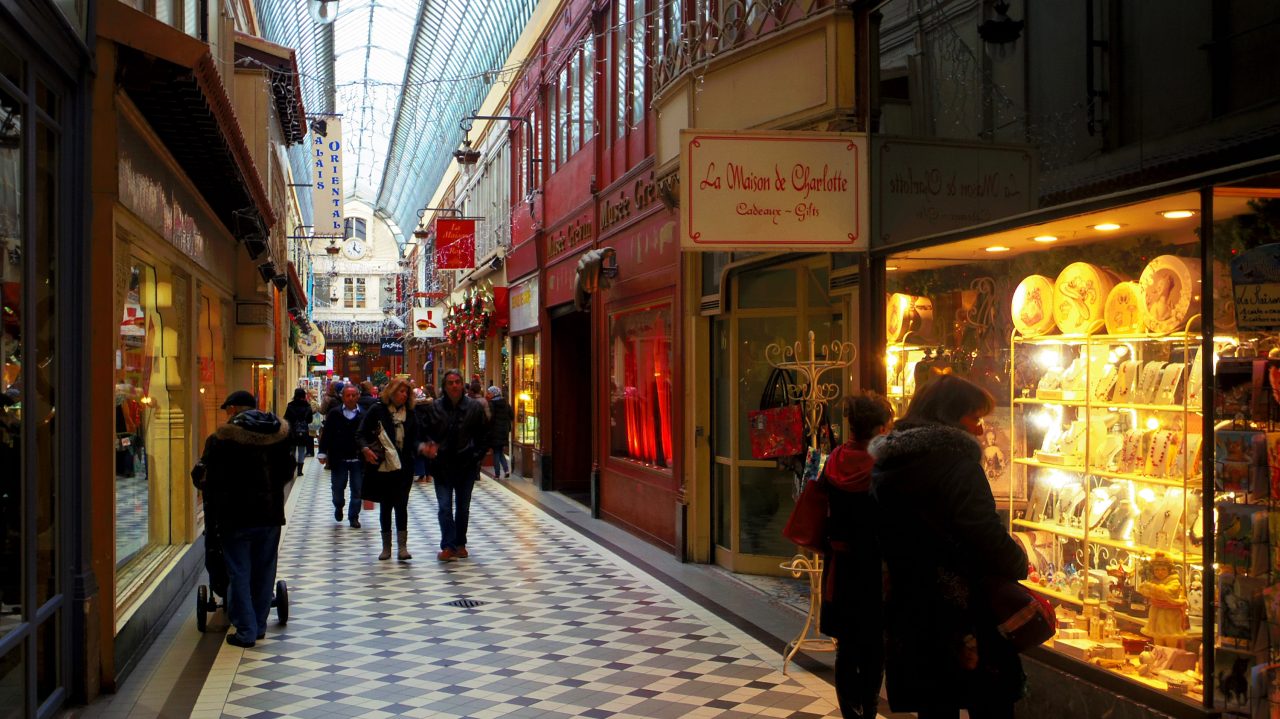
Passage Jouffroy
-
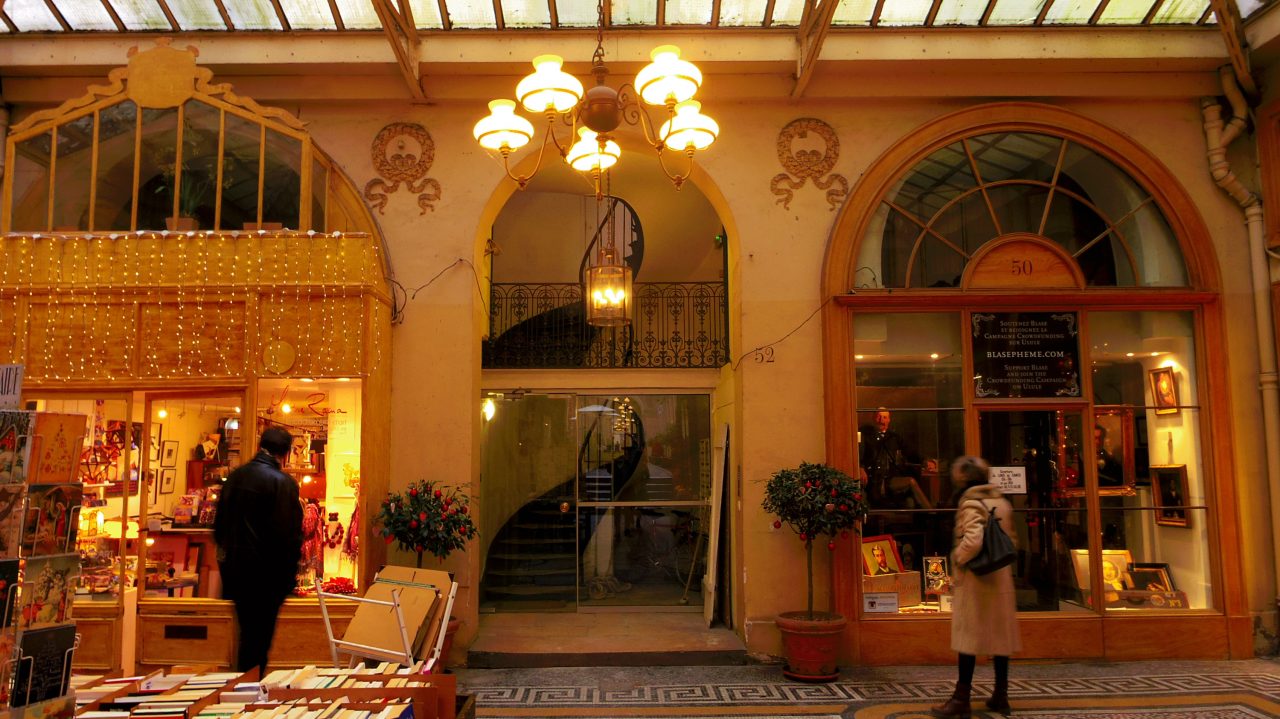
Galerie Vivienne
-
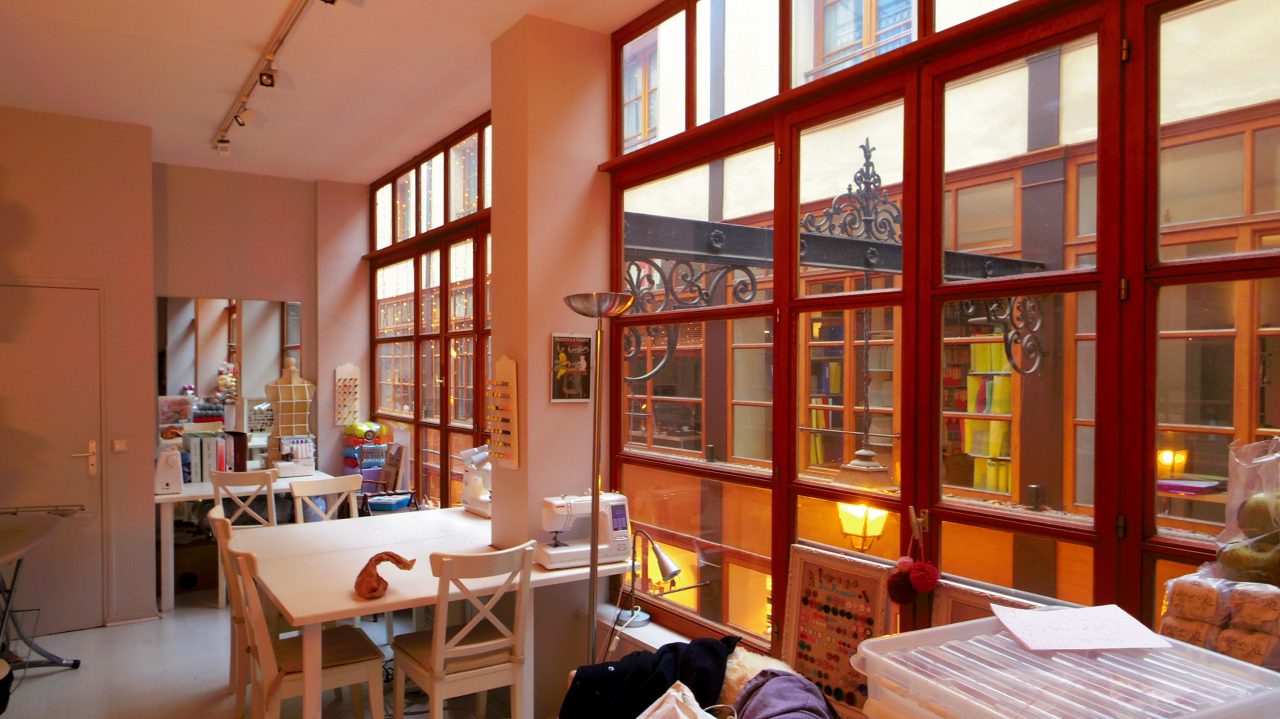
Passage du Grand-Cerf
A part of the first floor was used as a shop, office, restaurant and atelier and so on, and a part of the second floor was used as a storage and house for an employee at the time. Although the current shop has a store space in the second floor, the ceiling height is very low. There are many passages having a high ceiling and a big show window in first floor. Busy passages in weekend feel like relatively narrow but I did not feel much sense of oppression in the passage thanks to the big show windows and the glass roof having the height more than two floors.
The passages change the atmosphere with a light after sunset. The commodities illuminated by the light in the show windows have different charm by deepening shadow. Looking at the show windows in the passage, I find the facade being different from that on the street side such as a plastic frame window, commodities protruding out in the street, a bookcase used as a display shelf instead of a show window, and no glass in the window frame of the second floor. This is from the difference of measures to prevent crime.
The windows of the first floor in Paris are generally equipped with a shutter or iron bars for reasons of security, but I can’t found it in the show windows at the shops of the Passage. After closing the shops, the entrance of the passage itself is closed by an iron barred door for the measures to prevent crime. It is no longer necessary to put such a shutter in the windows of each shop, and the show windows seem to become more flexible. Isn’t this relationship similar to that between the city walls and city of Paris, as I mentioned in the previous chapter?
-

Passage which is closed by an iron barred door in the Night
-

A corridor connecting two buildings and the small windows of public housing that faces on the inside Passage in third floor.
-
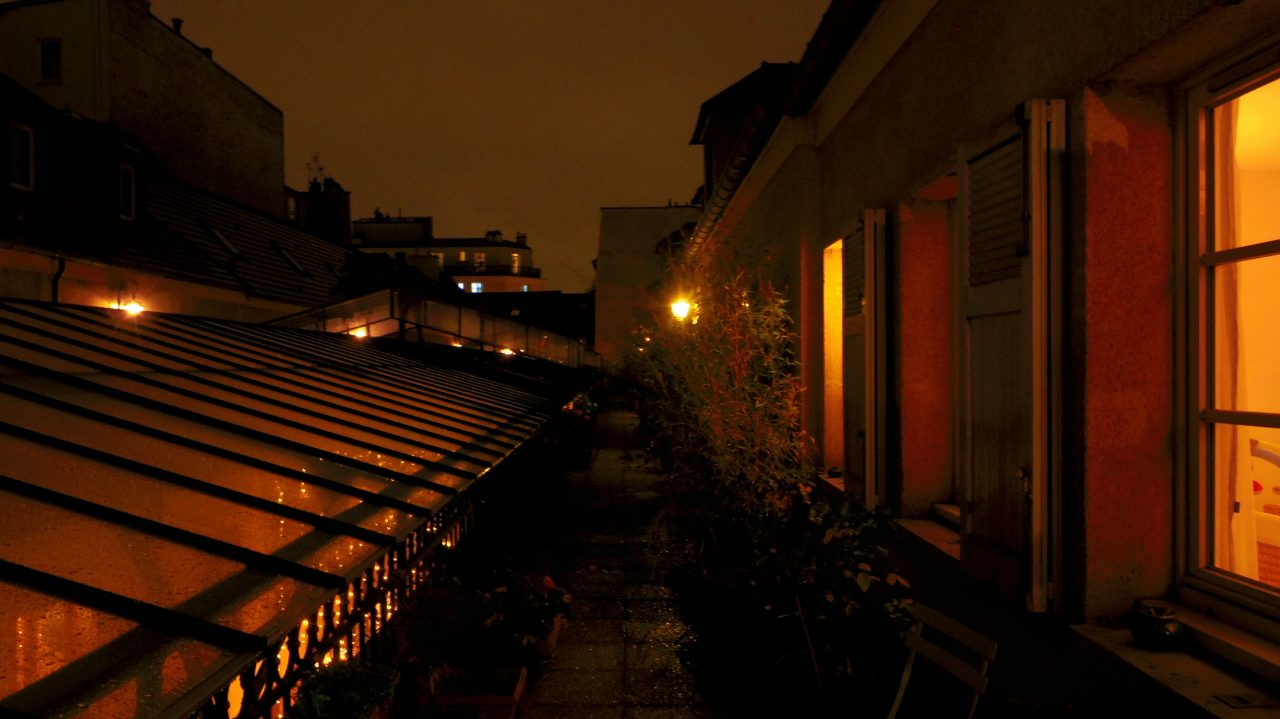
There is a roof top housing facing a terrace both side of the corridor.
There is not an iron barred on the window.
-
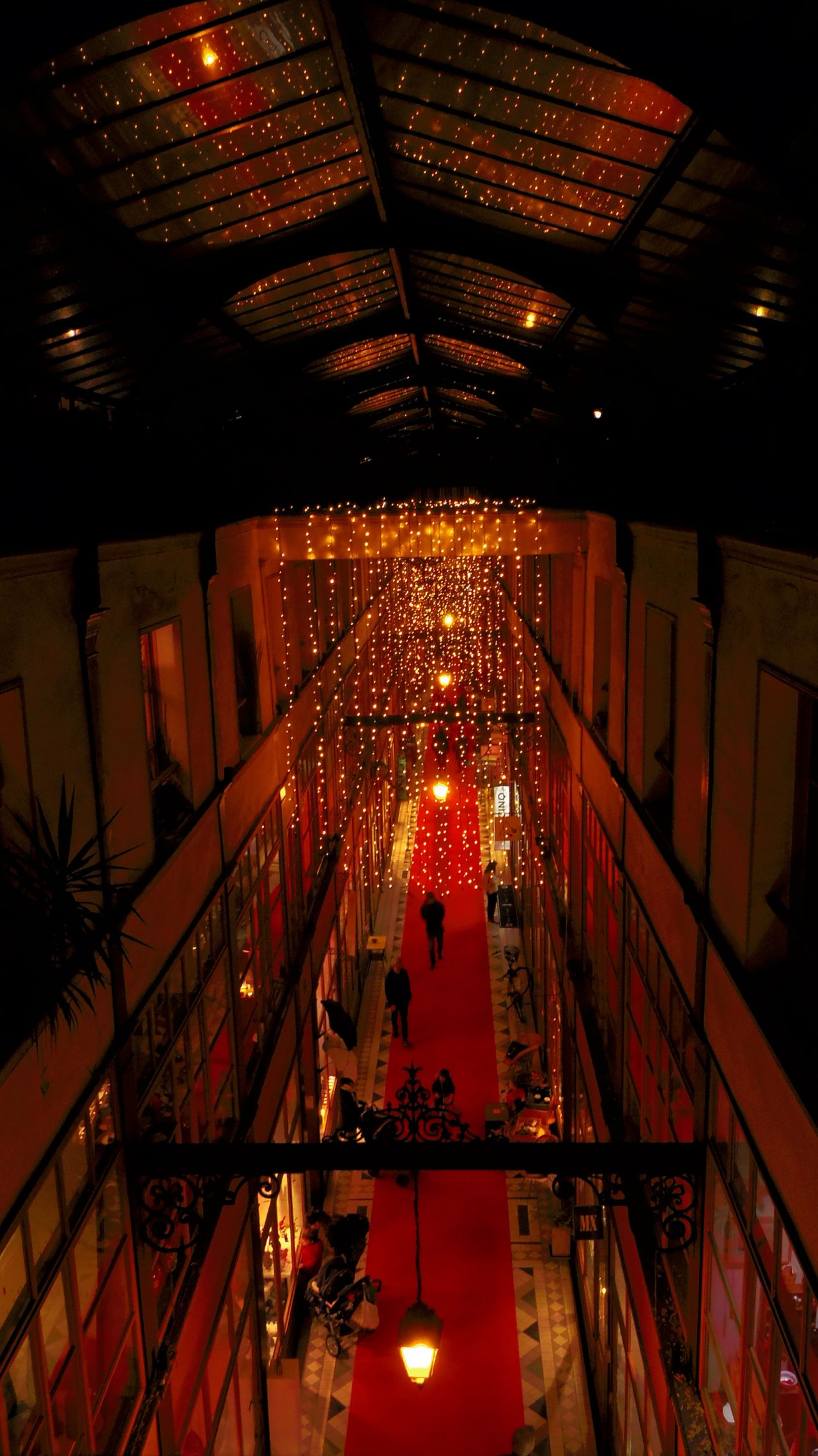
Passage du Grand-Cerf has some corridors connecting two buildings.
There is a roof top housing facing a terrace both side of the
corridor and the public housing facing on the inside Passage in third floor.
Fortunately, I was given an opportunity to visit the upper floor of Passage du Grand-Cerf by its resident. After the shops are closed, the Passage is very quiet but also has good atmosphere. The inhabitant was talking proudly. Since a long time ago, people in this city enjoy feeling a small bit of happiness while visiting the street and sharing the joy. Or people living in this city fear irregular disturbance and are intoxicated occasionally in jubilation. Women and children look inside of the shops through the show windows with their eyes shining, and they assimilate themselves appeared there and what they look ahead.
Observing the city of Paris through the window this time, I’ve realized it as if each small emotions gathering thereconnect with the high hope to create a flow of the entire Paris. It might be an overstatement, but I feel that it is not a bad hypothesis, when I see people looking at a street or courtyard from a window, when I look friends gathering near a window to enjoy conversations, or when I noticed myself gazing outside vacantly from a window while writing this essay.
Raybun FUNAKI
1987 Born in Ibaraki, Japan 2010 Bachelor degree from Department of Architecture and Building Engineering, Shibaura Institute of Technology. Studied abroad in France 2013 Completed the Master Course, ENSA-Paris-Belleville, Architecte diplomé d’état. Worked at EZCT architecture & design research 2014. Founded TeePee Architects in Paris.
http://www.teepee-architects.com/

